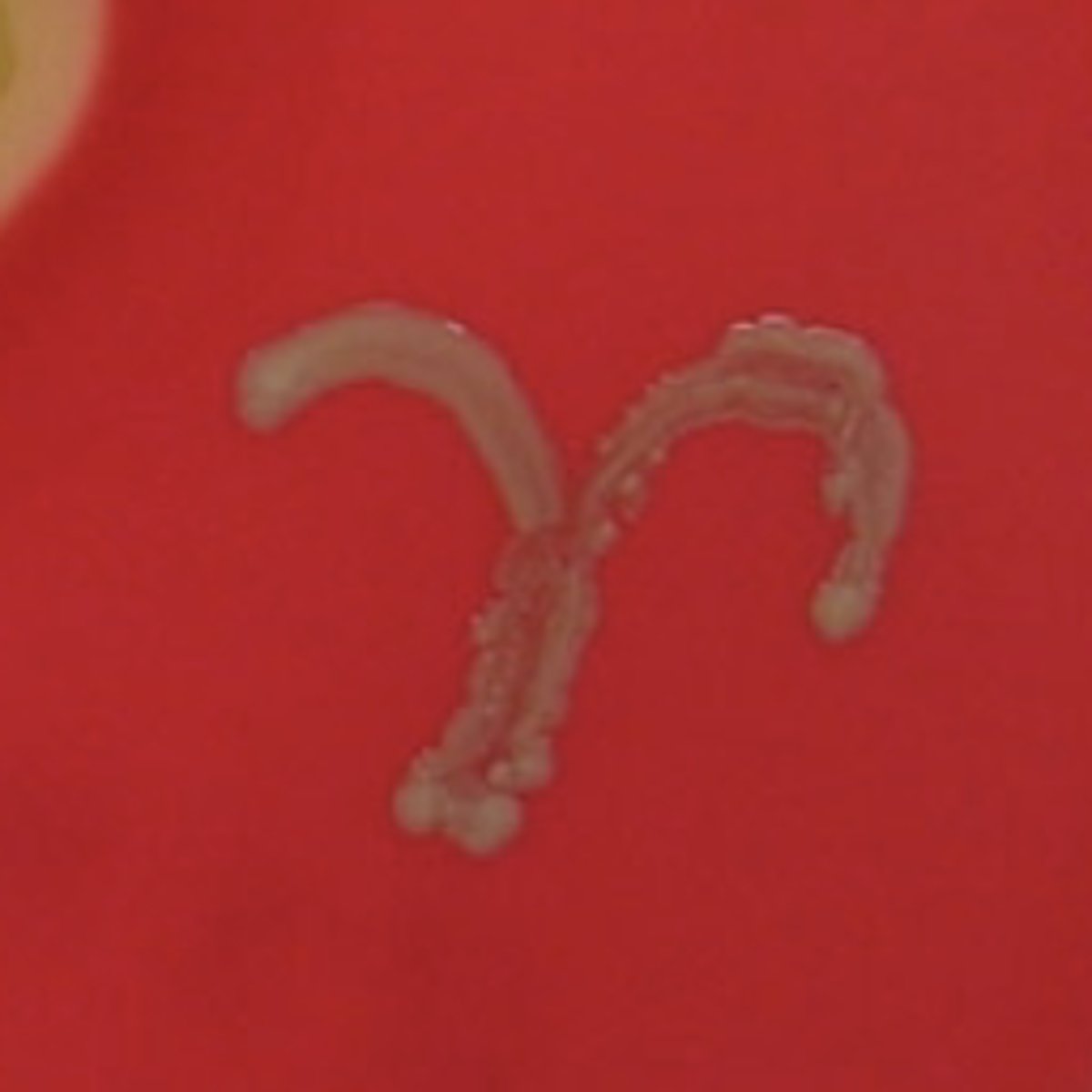Bacterial Anatomy and Pathogenicity Pt 2
1/106
There's no tags or description
Looks like no tags are added yet.
Name | Mastery | Learn | Test | Matching | Spaced |
|---|
No study sessions yet.
107 Terms
ß-lactams are _________________ inhibitors. they mimic the D-Ala-D-Ala of the _________________ of the peptide terminus
transpeptidase, peptidoglyan
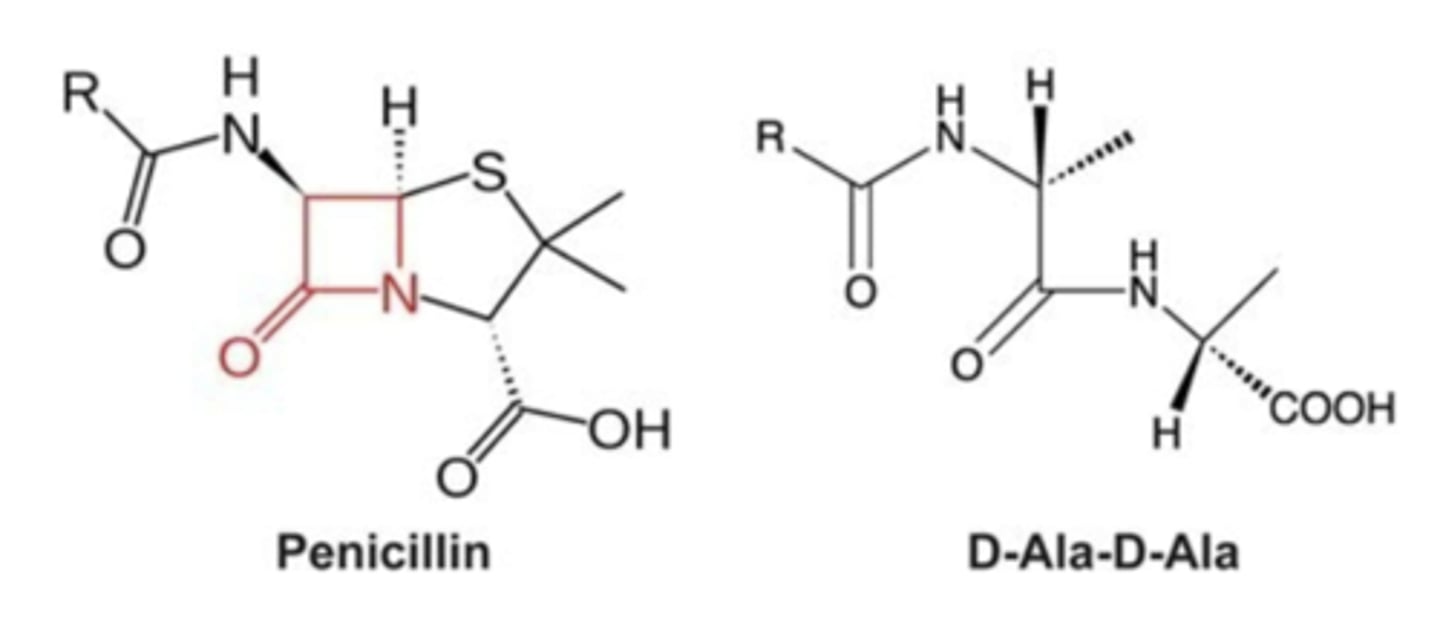
gram negative vs postive: stains red
negative
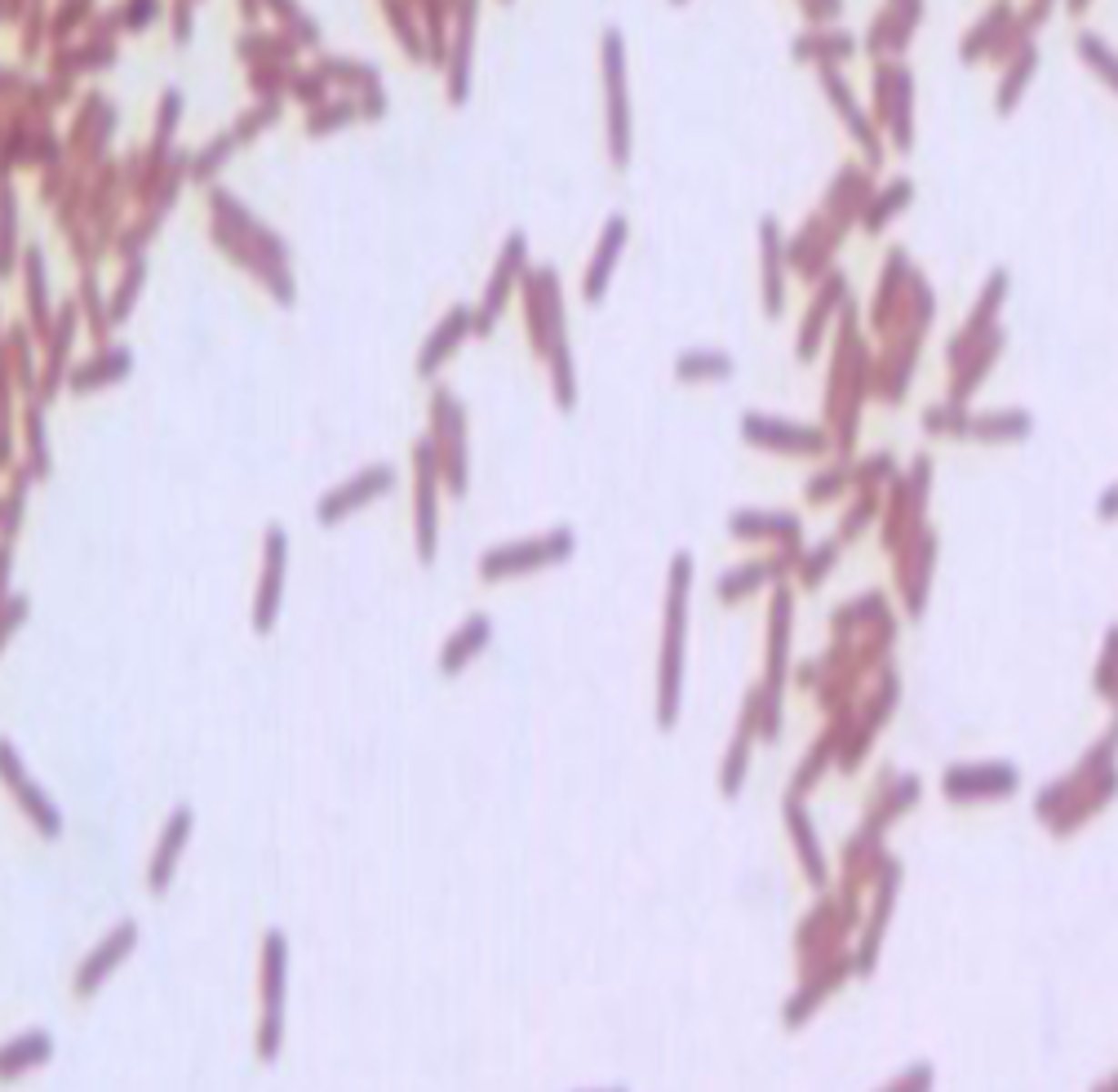
gram negative vs postive: stains purple
positive
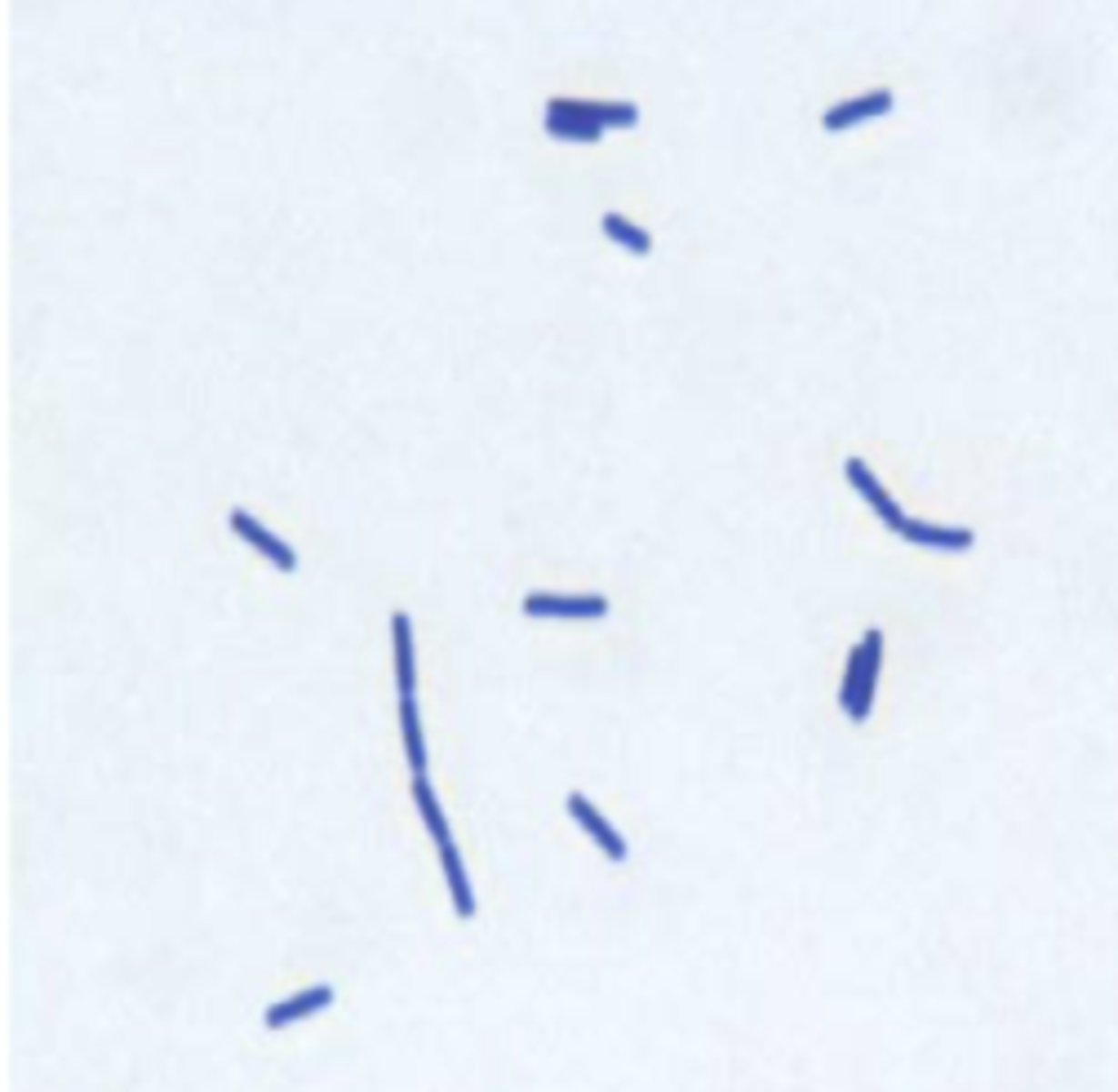
(t/f) gram-negative bacteria contain teichoic acids
false; gram-positive bacteria do
the bacterial capsule is usually made of a loose network of (polysaccharides/fatty acids/polypeptides)
polysaccharides
what component of the bacteria protects it from phagocytes and contributes to biofilm formation?
capsule
what component of the bacteria forms dental plaque?
capsule (forms biofilm)
what component of the bacteria provides adhesion, defense against host immunity, and protection against drying out?
capsule
the surface array (s-layer) of bacteria is made of crystalline array of interlocking (lipids/carbs/proteins)
proteins
what component of the bacteria functions to protect the bacteria from bacteriophages?
surface array (s-layer)
(t/f) the surface array (s-layer) is only found in gram positive bacteria, but also archaea
false; found in gram positive and gram negative bacteria as well as archaea
what component of the bacteria helps form a slime layer and glycocalyx?
capsule
what is the transforming principle?
idea that genetic information can be transferred from one organism to another, first shown when dead virulent bacteria transferred traits to live non-virulent ones; DNA was that genetic material
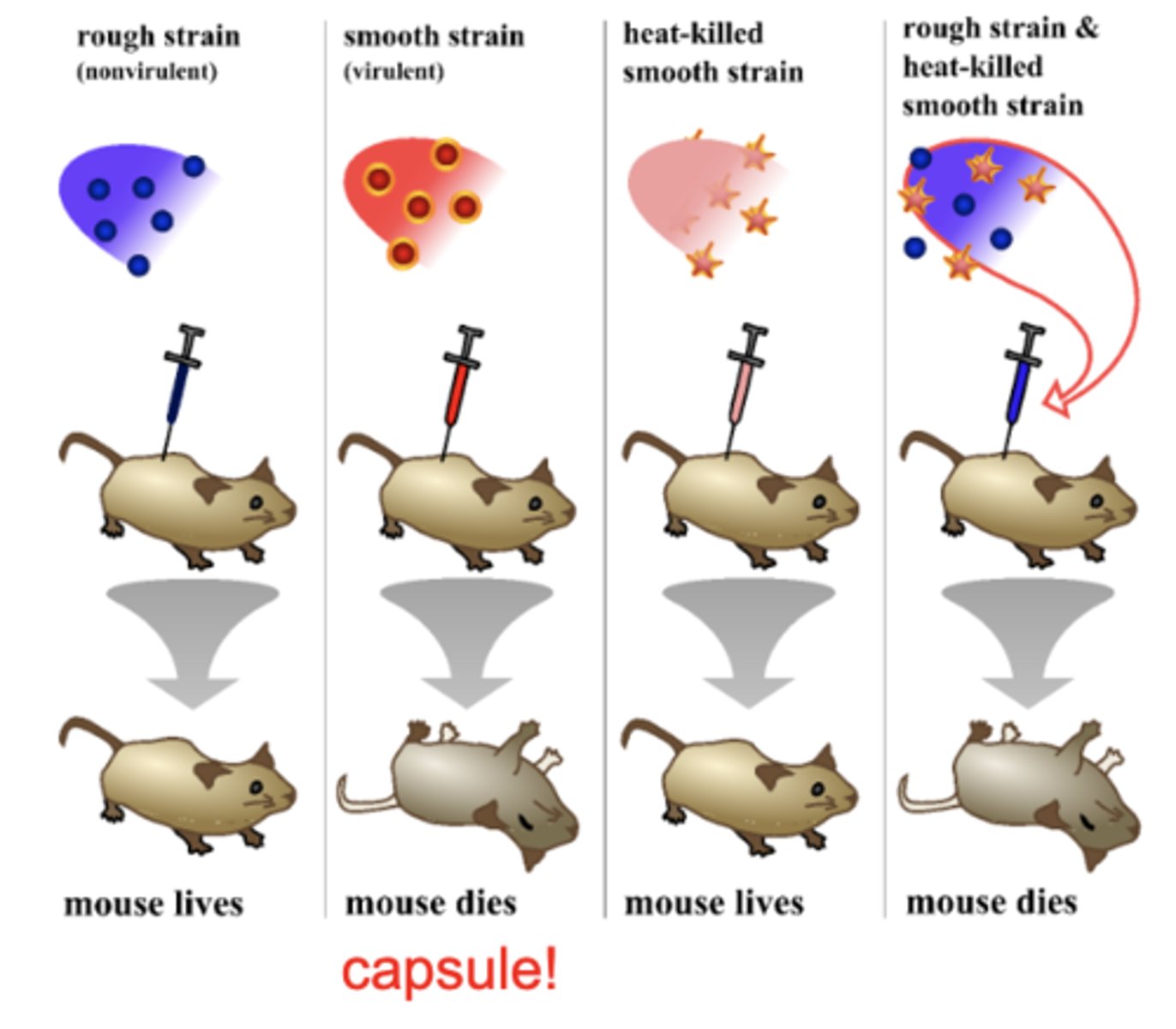
what are the complex and dormant structures formed by some bacteria?
spores
what are 4 environmental conditions spores are resistant to?
1. heat
2. radiation
3. chemicals
4. dessication (dryness)
what is the name of the thin covering that surrounds a spore?
exosporium
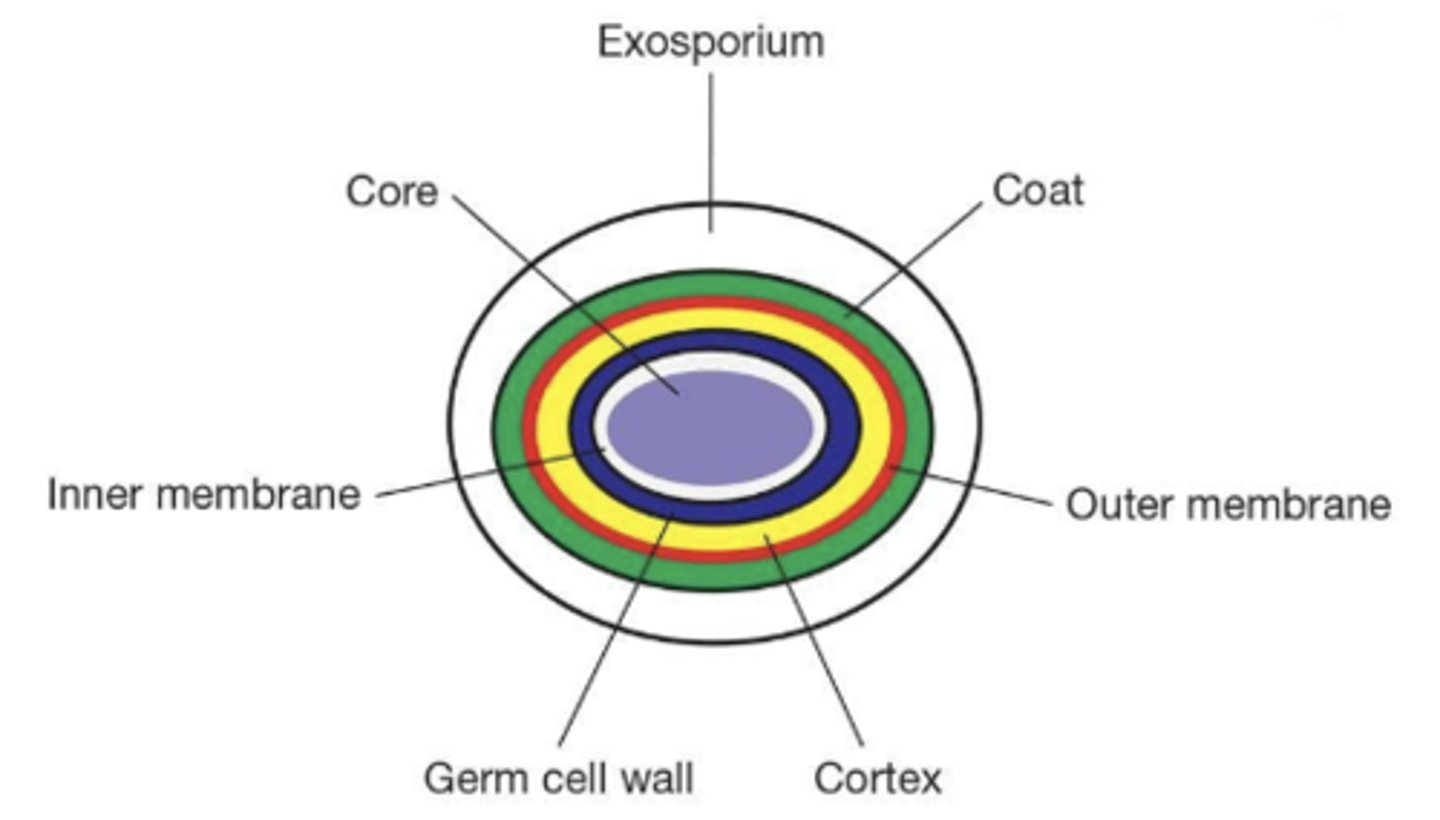
a (thin/thick) layer of (sugar/fats/proteins) forms the spore coat
thick, proteins
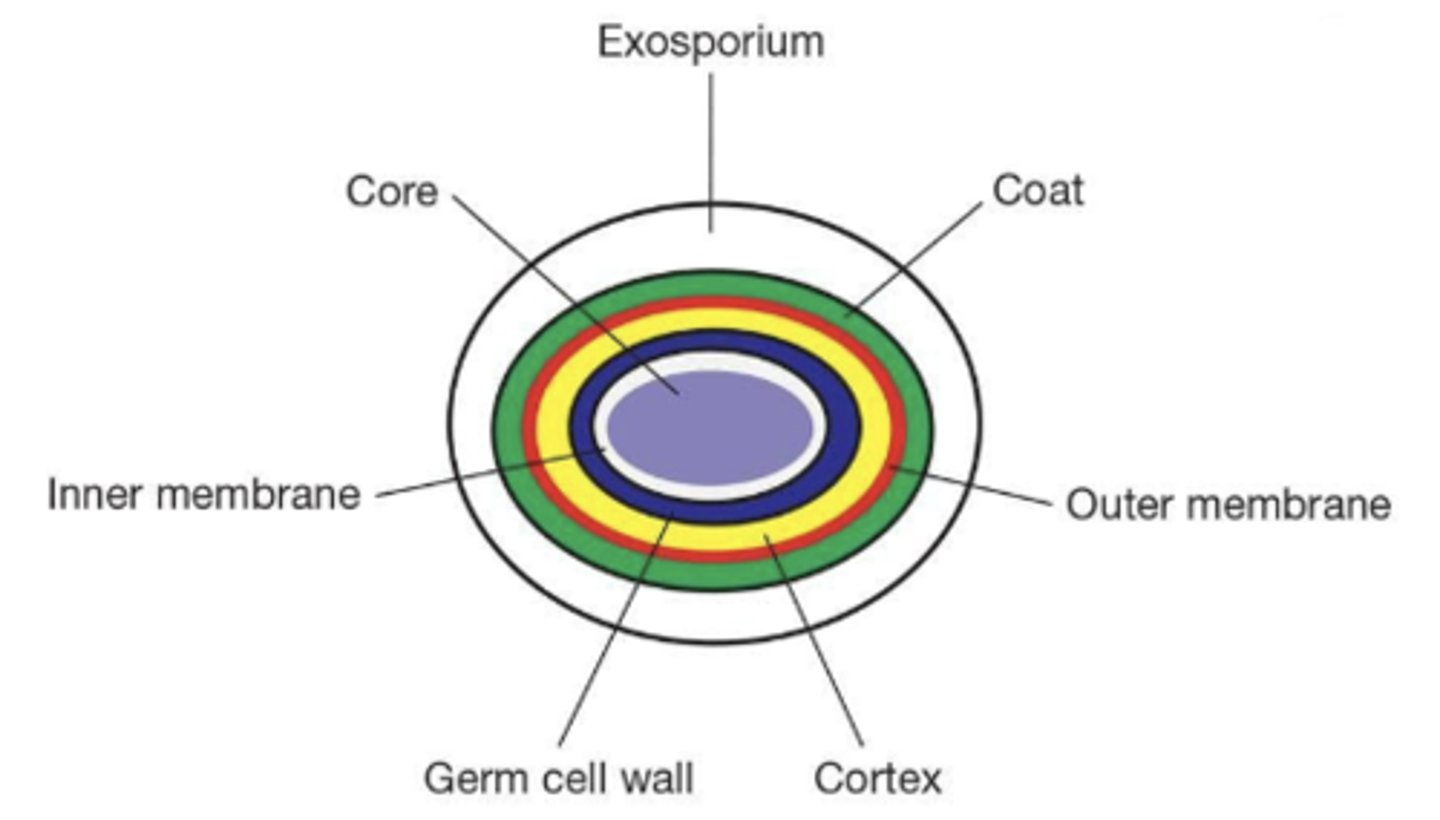
what part of the spore lies beneath the spore coat, made of thick peptidoglycan?
cortex
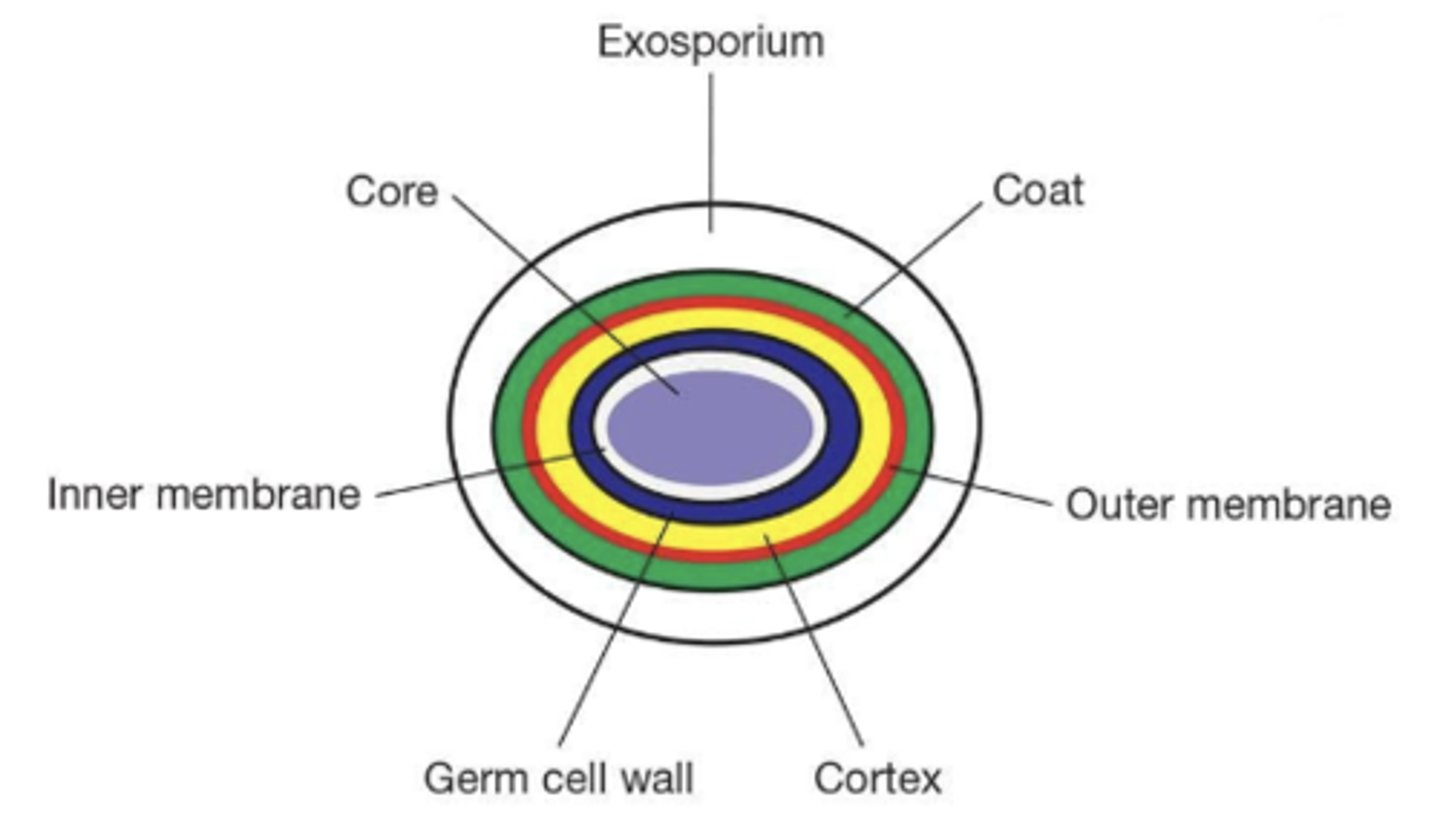
what part of the spore contains a nucleoid and ribosomes?
core
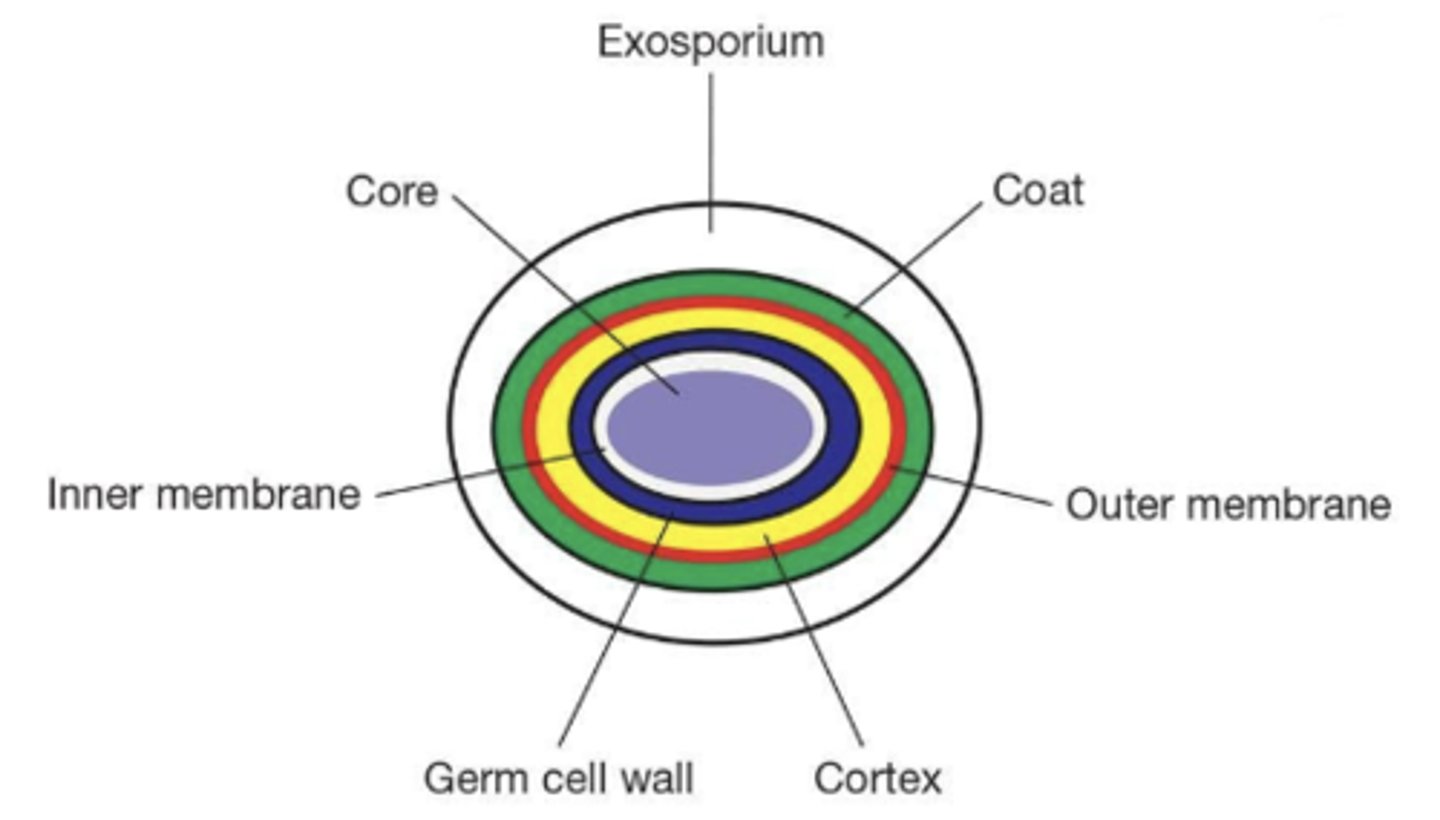
what element in endospores allows them to be so resistant?
calcium (complexed with dipicolinic acid)
what is the name of the DNA binding proteins found in endospores that make them so resistant?
SASPs (small acid soluble proteins)
endospores are resistant because their core is (dehydrated/well hydrated)
dehydrated
what are 2 parts of the endospore that allow it to be so resistant?
1. spore coat
2. exosporium
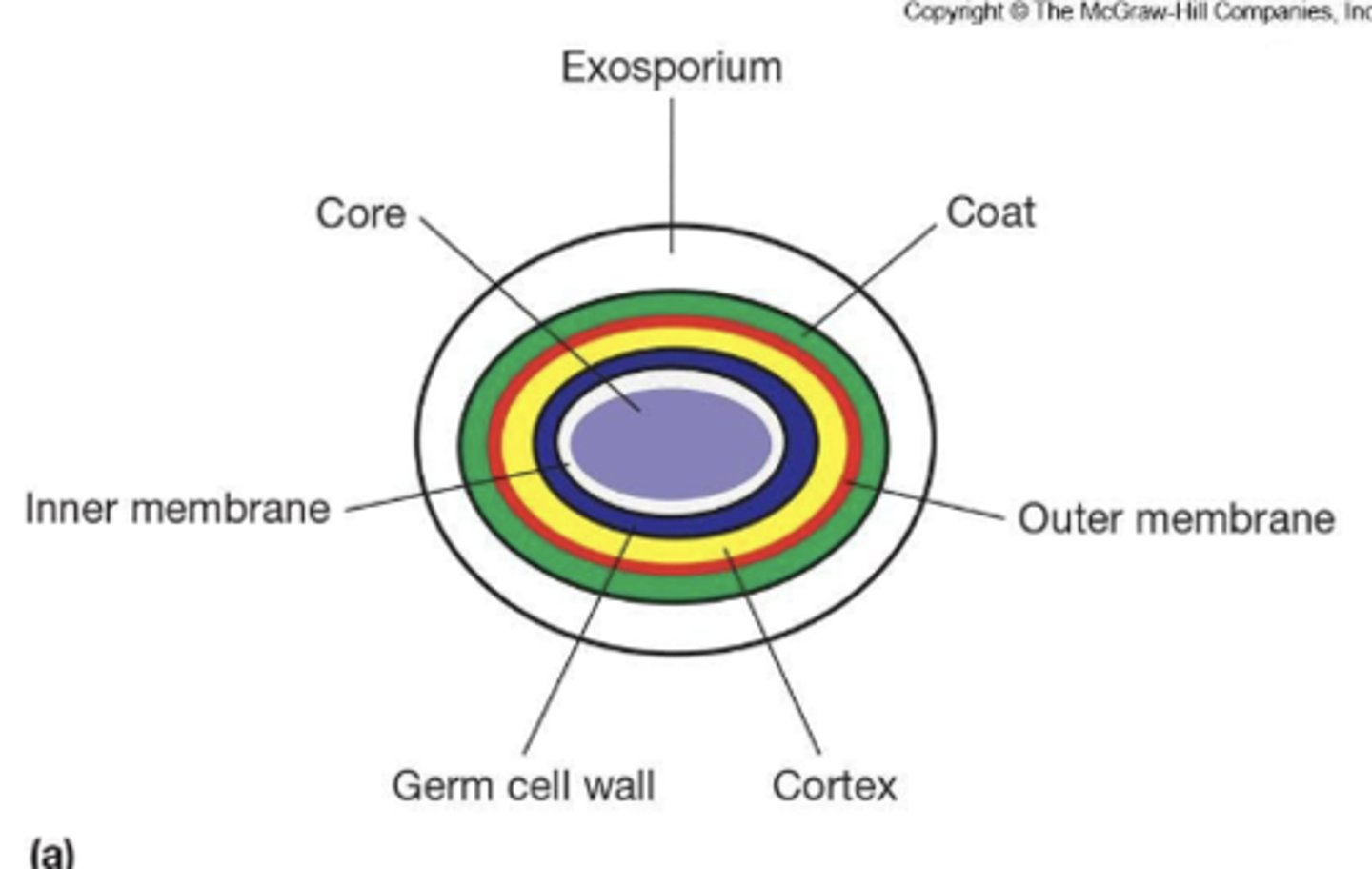
(t/f) sporulation is a single stage process that occurs in 3 days
false; sporulation is a multi-stage process that occurs in hours
when does a bacteria commence sporulation?
when growth ceases due to lack of nutrients
activation prepares the spore germination. what is usually applied to the spore to activate it?
heat
germination of a spore occurs when ______________ are detected
(environmental) nutrients
during germination, a spore will swell and rupture due to absorption in the (exosporium/coat/cortex/core)
coat
(t/f) the outgrowth from the vegetative cell occurs occurs after germination
true; emergence from vegetative state comes after germination
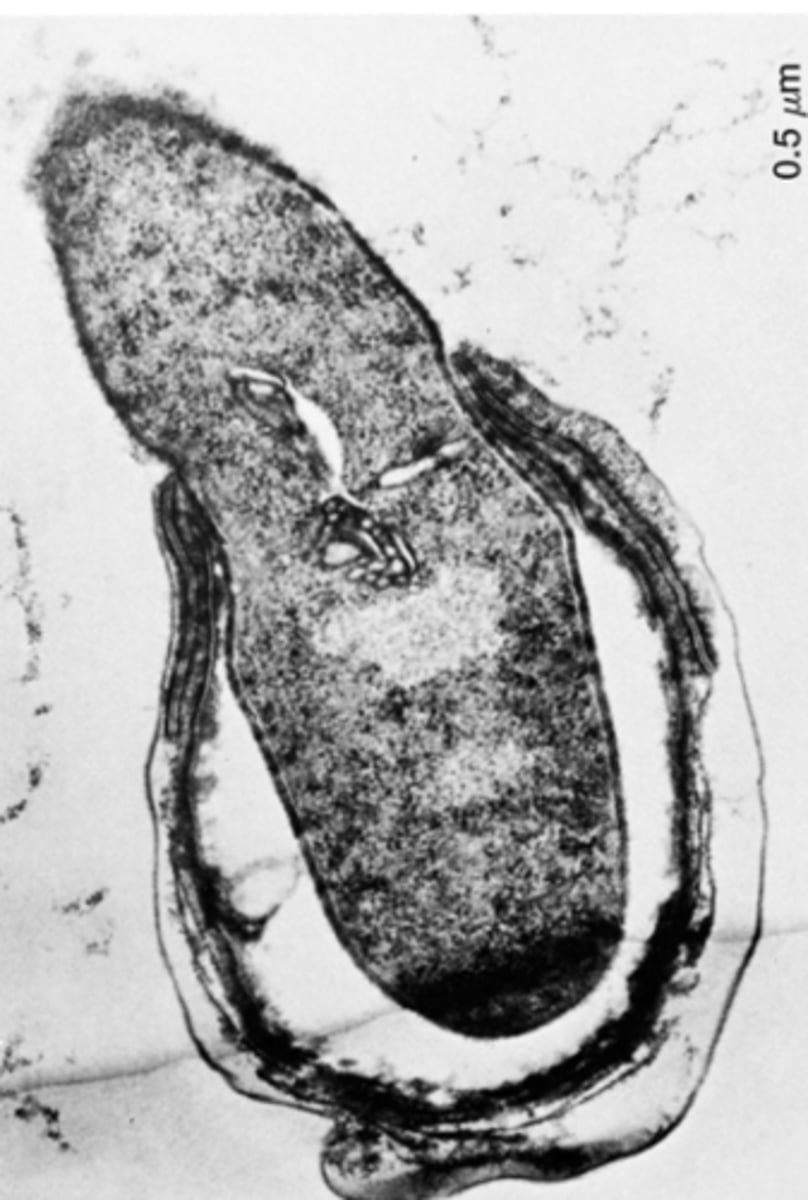
what bacterial structure allows for swimming motility in liquids?
flagella
what bacterial structure allows for twitching motility on surfaces?
pili
what bacteria structure are fibers that can be extended, attached to surfaces, or pulled back to pull along a surface?
pili
(t/f) the gliding motility of bacteria over a smooth surface is not well understood
true
what is actin-based propulsion used by some bacteria?
bacteria hijack the host cell's actin cytoskeleton to move and spread infection without leaving the host cell
what are 3 filament shapes that can make up a flagella?
1. spiral
2. hollow
3. rigid
the way that the flagella __________ controls the movement of bacteria
rotates
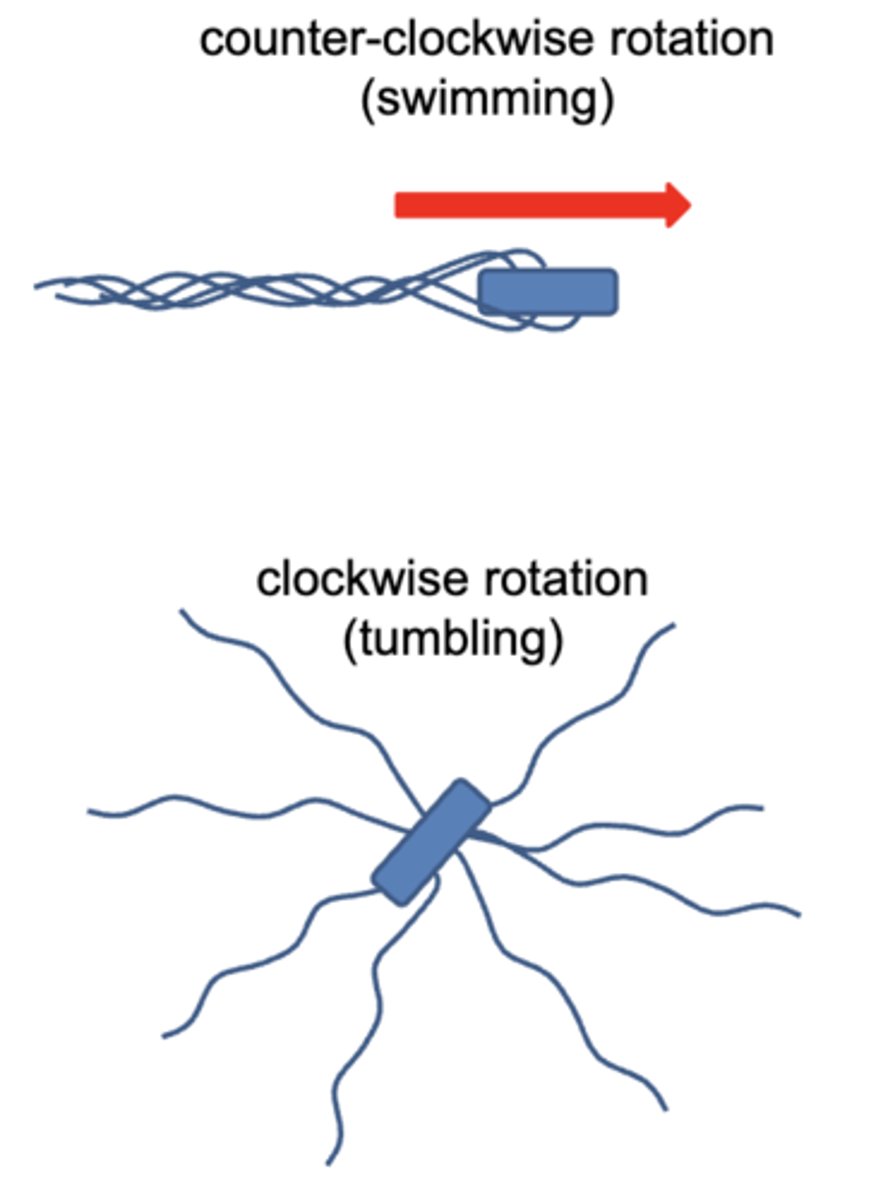
a (clockwise/counter-clockwise) rotation of the bacterial flagella results in swimming
counter-clockwise
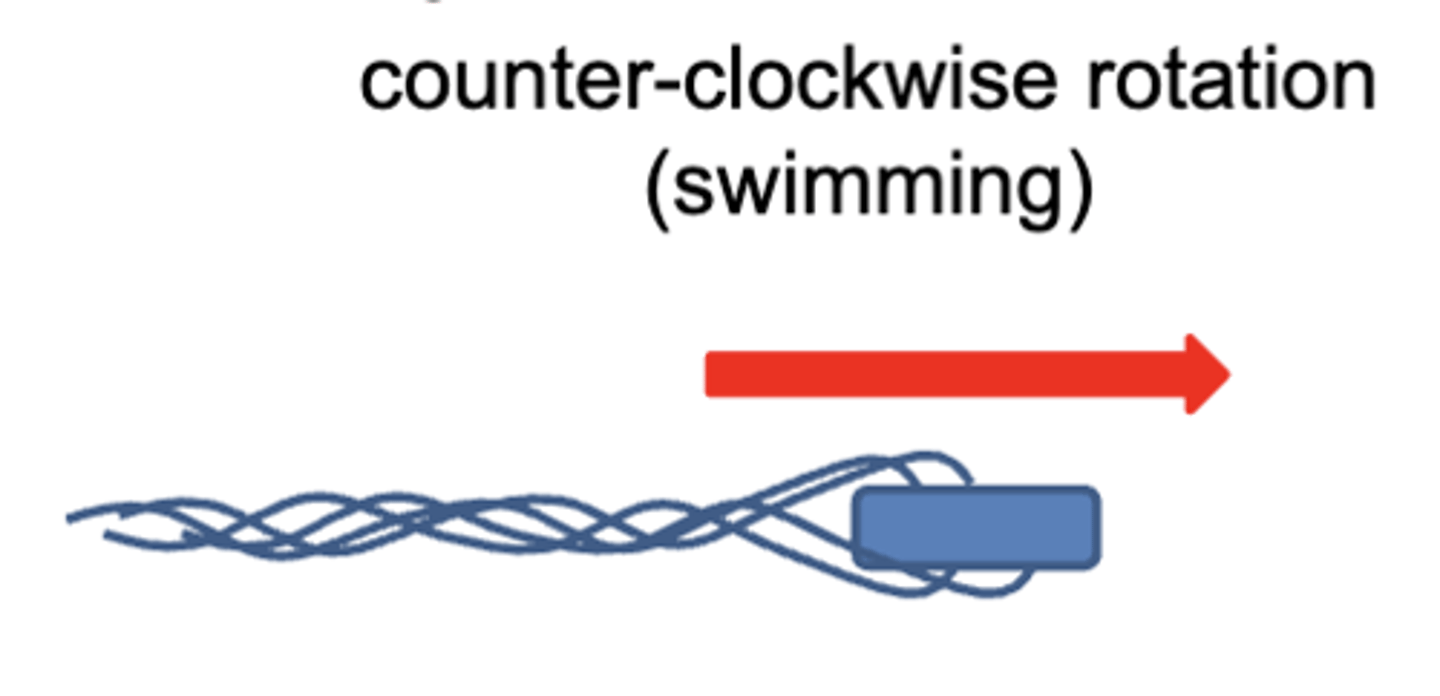
a (clockwise/counter-clockwise) rotation of the bacterial flagella results in tumbling
clockwise
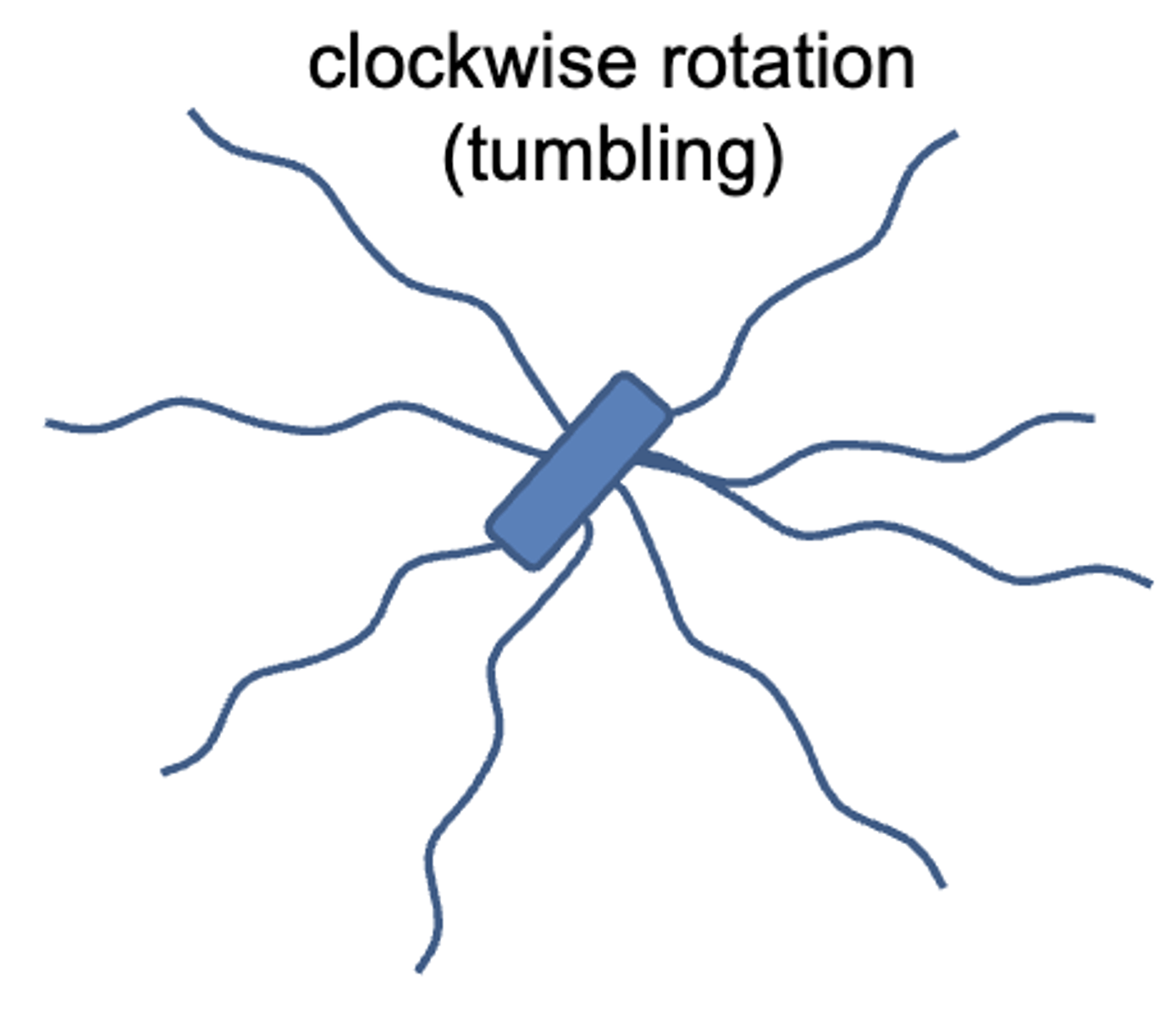
how does the nutrient gradient affect the shape of the bacterial flagella?
as bacteria swim, an increased nutrient concentration will cause the bacteria to continue swimming, but if it senses a decreased nutrient concentration, then it will tumble, and change direction
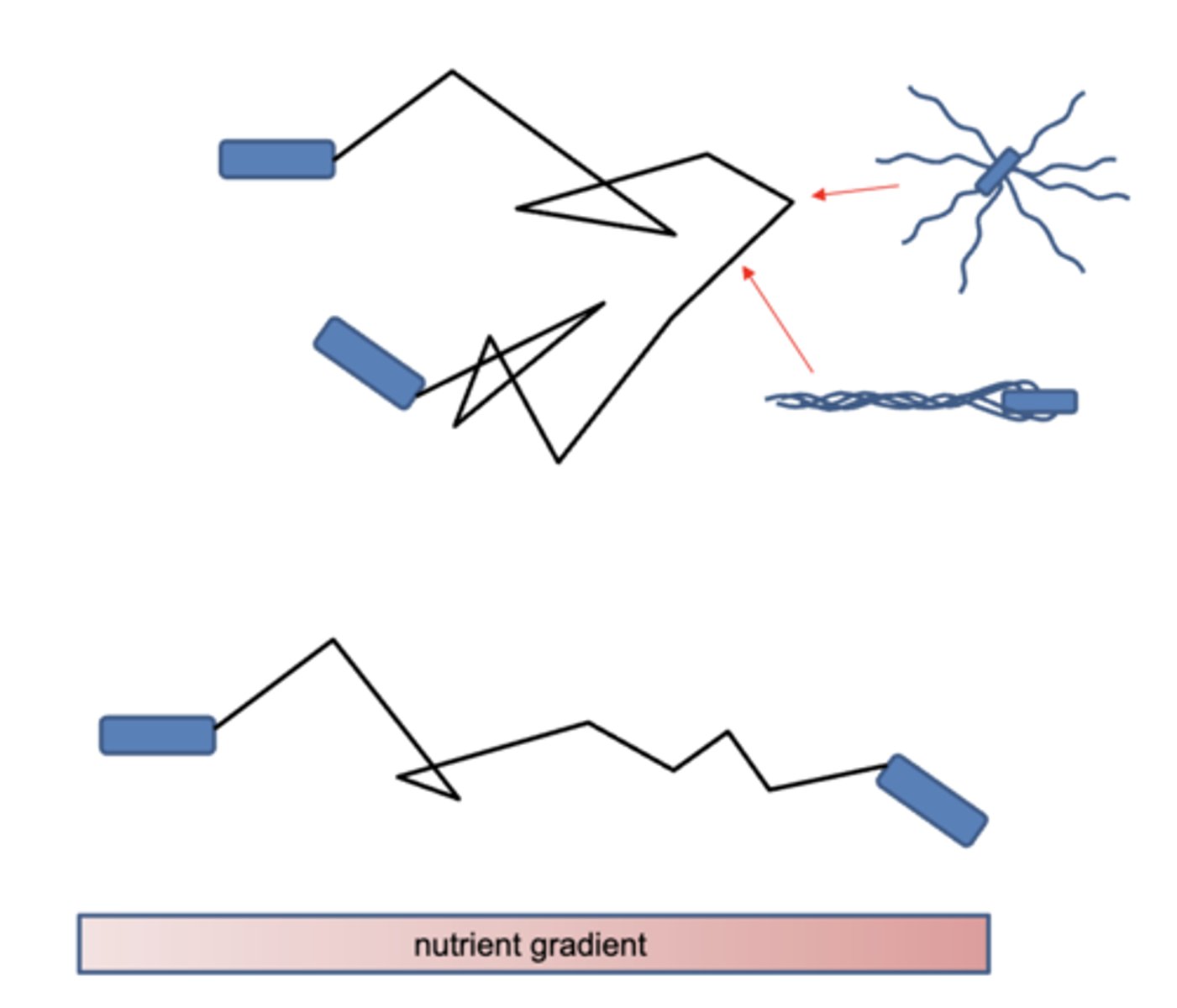
what is a monotrichous bacteria?
contain one flagellum
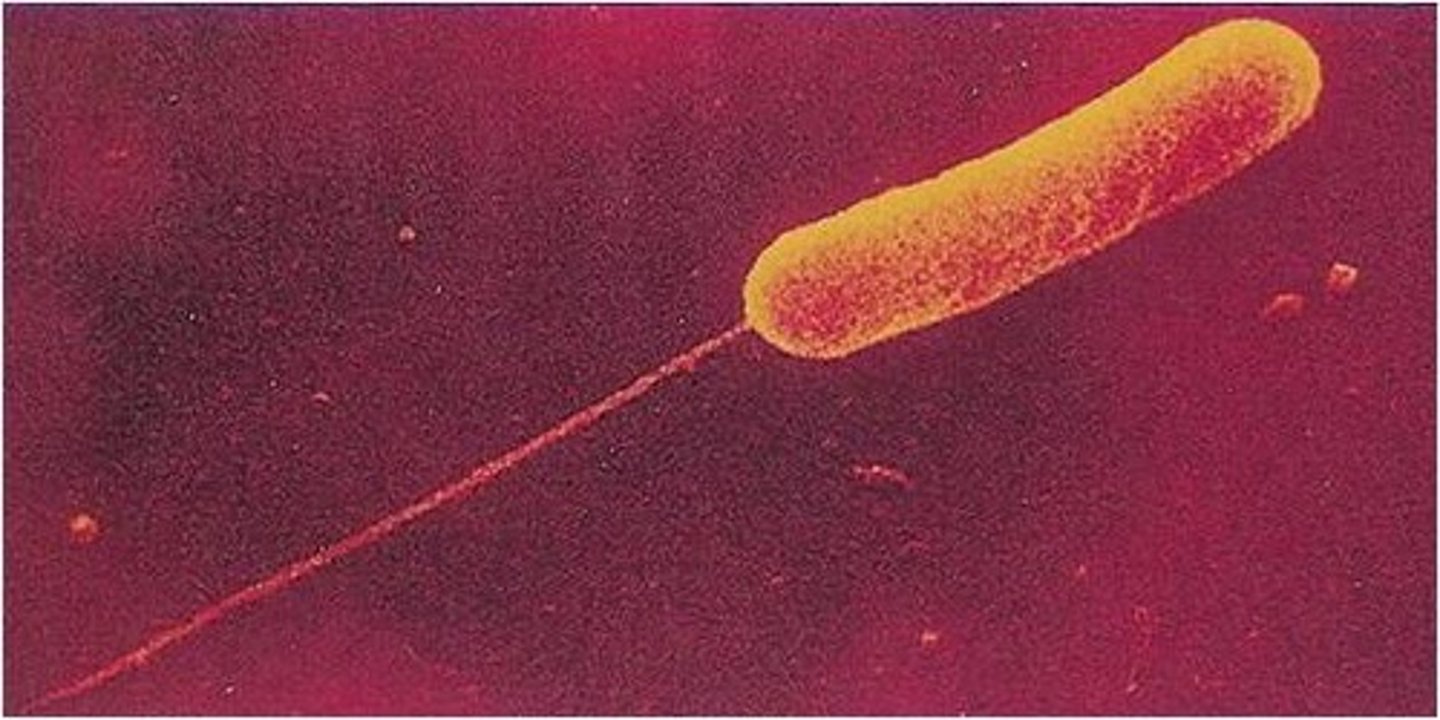
what is a polar flagellum?
flagellum at end of the cell
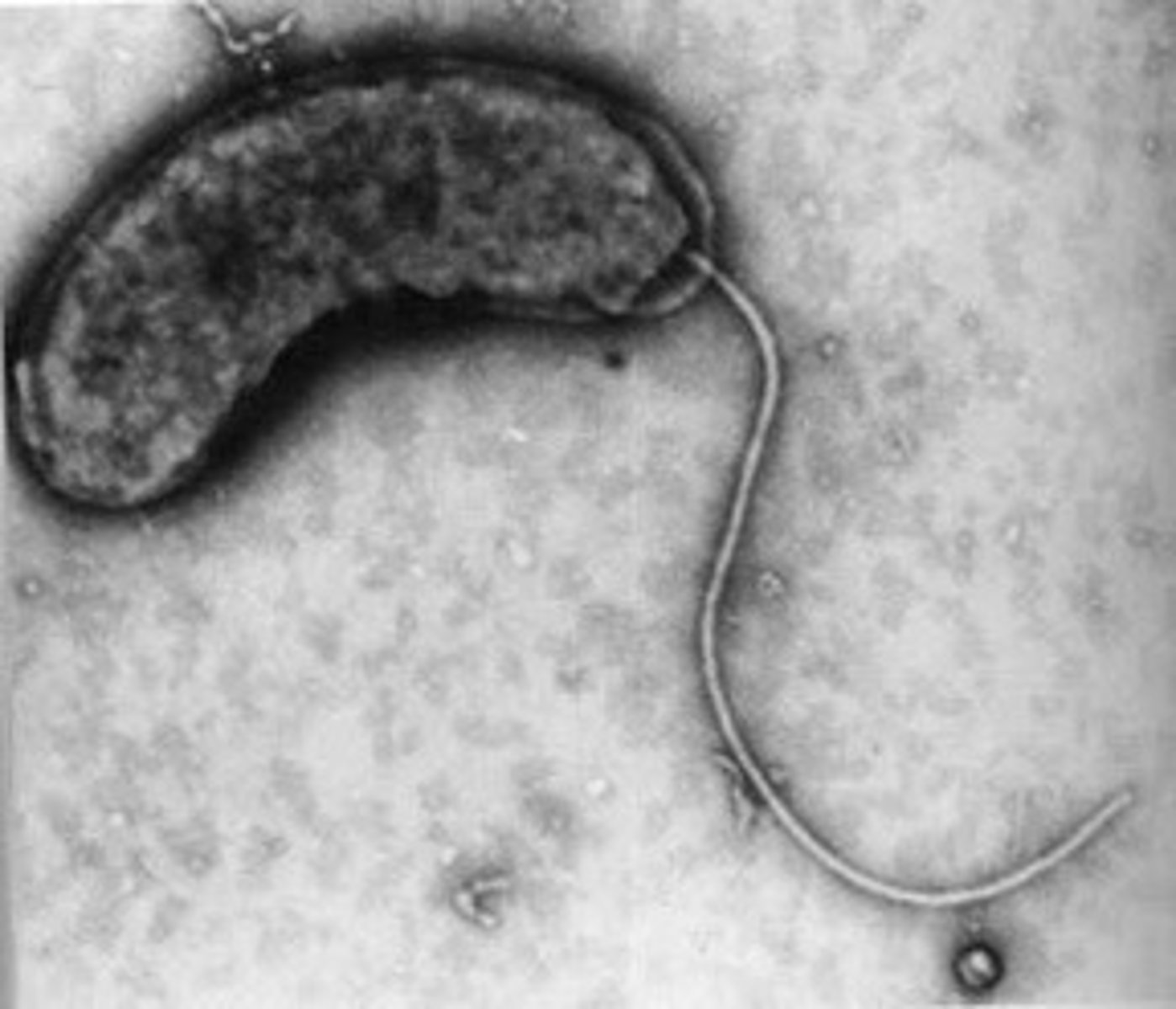
what is a amphitrichous bacteria?
one flagellum at each end of the cell
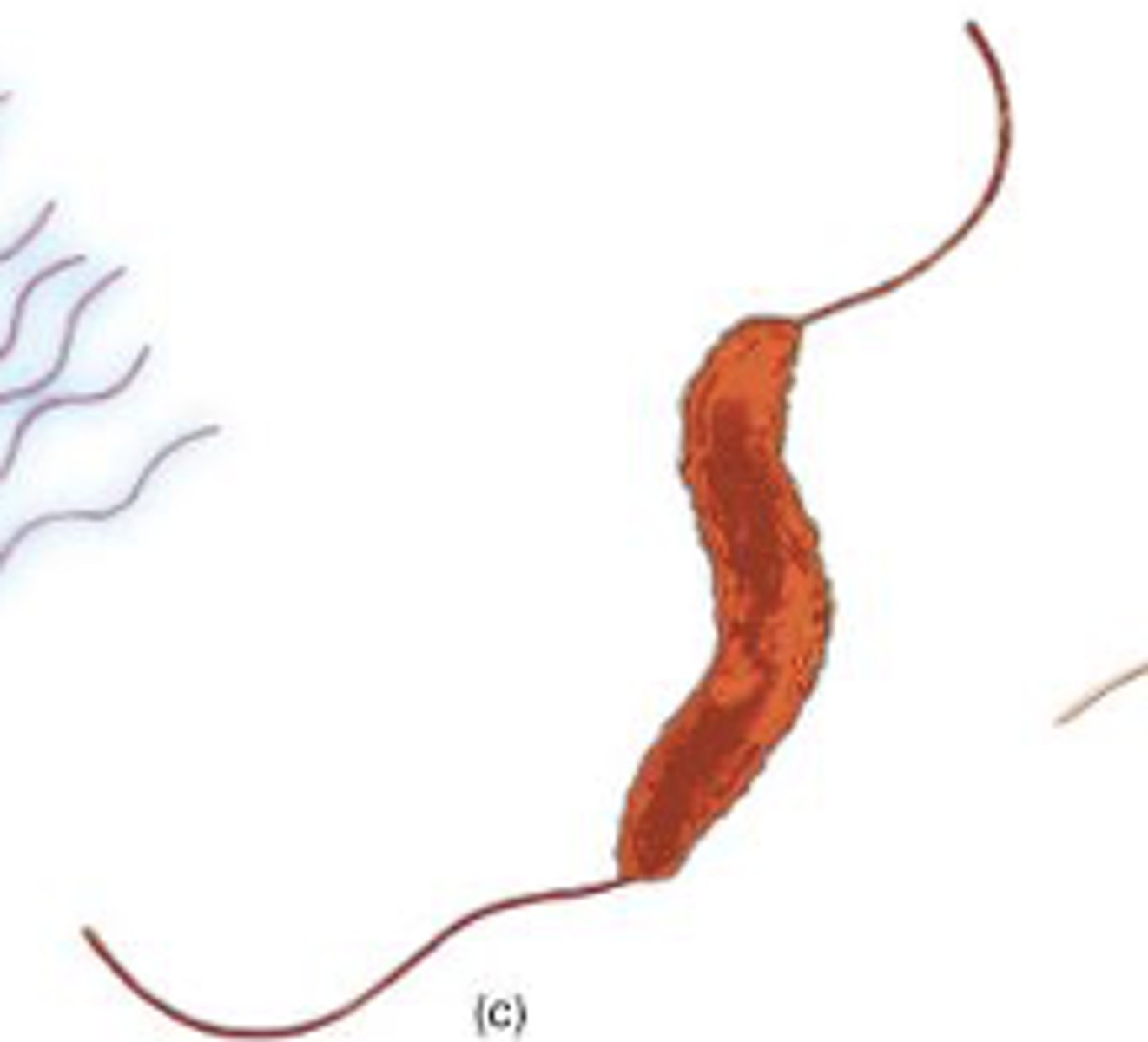
what is a lophotrichous bacteria?
cluster of flagella at one or both ends of the cell
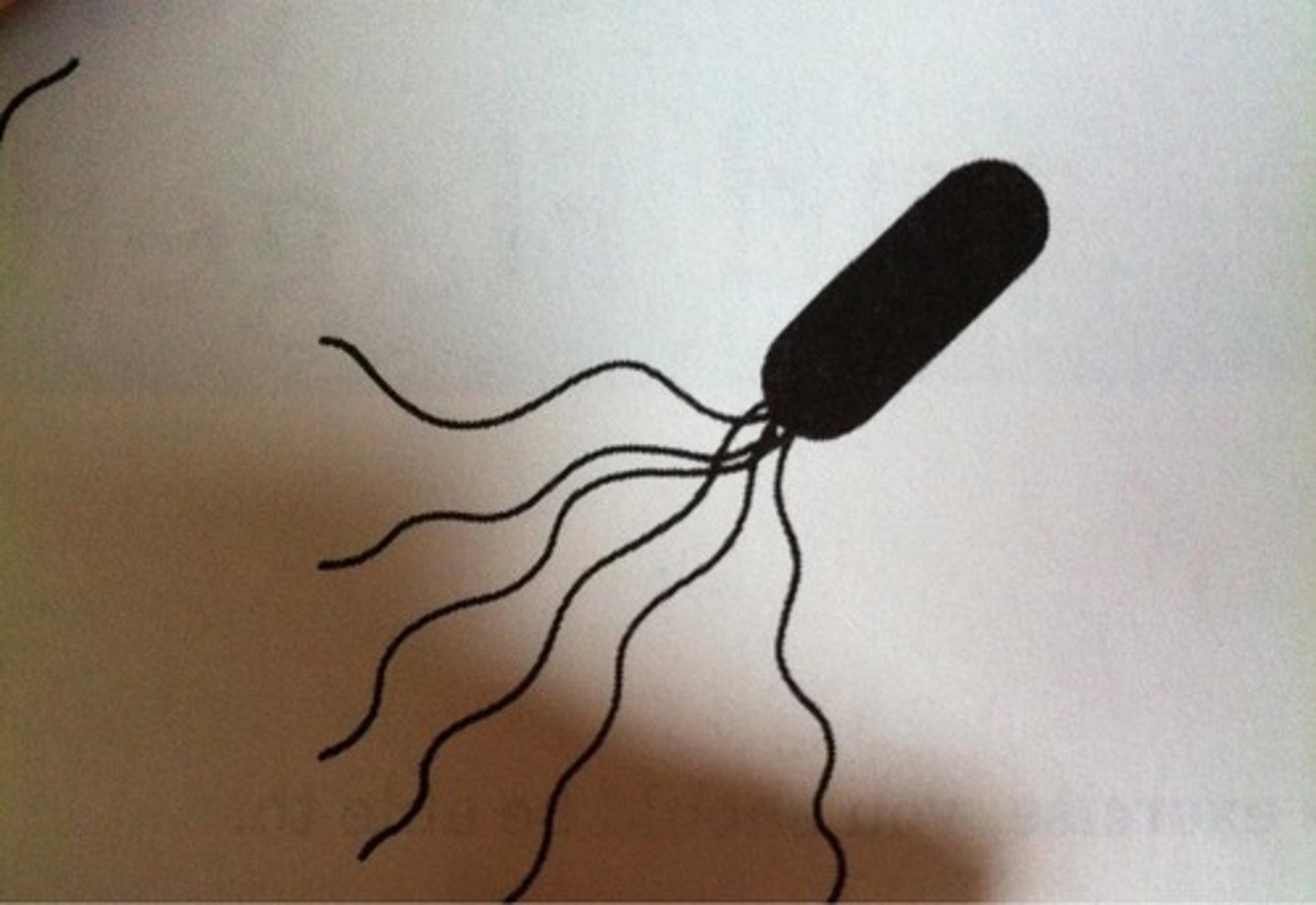
what is a peritrichous bacteria?
flagella spread over the entire surface of the cell
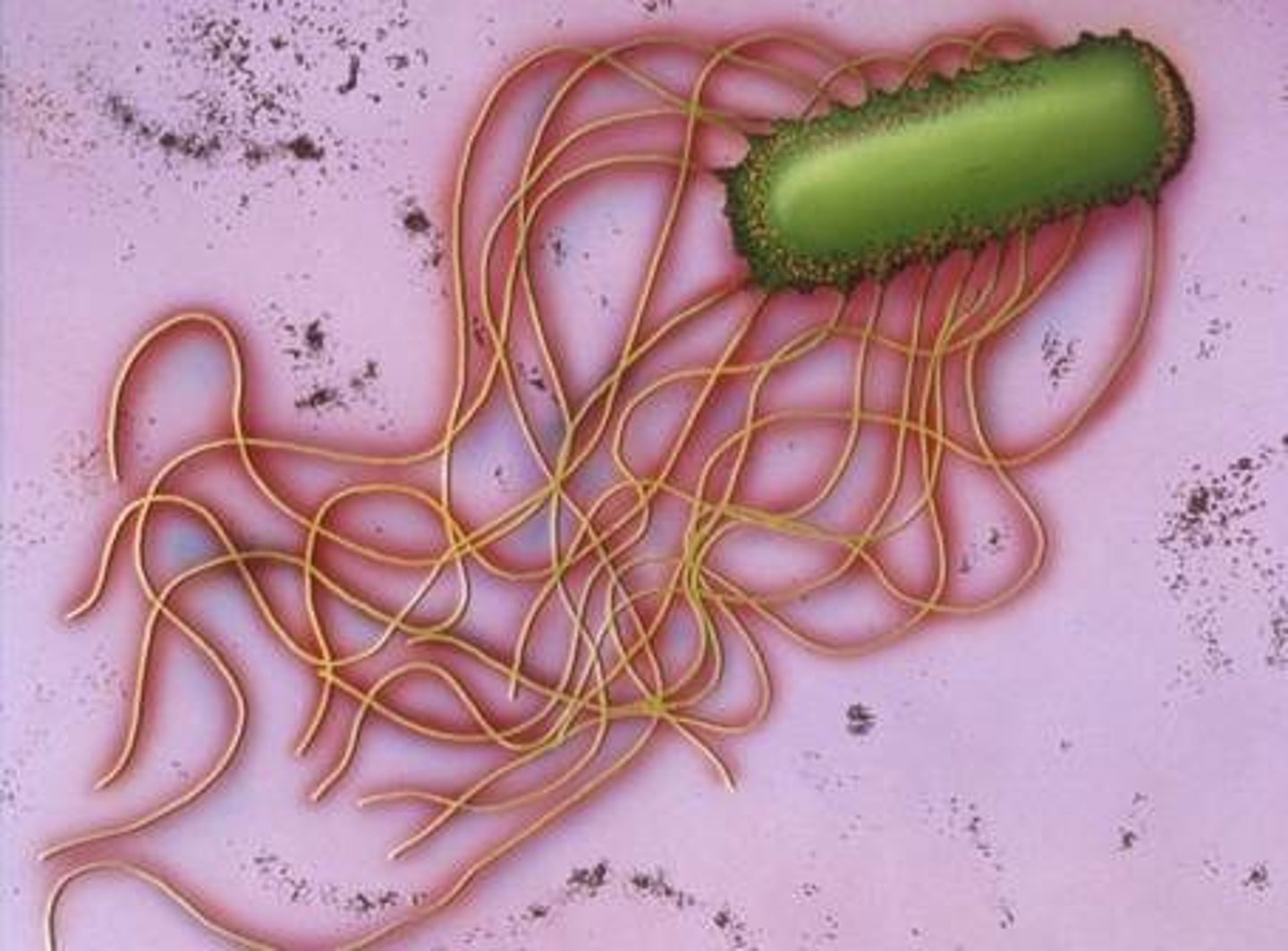
(t/f) all cells have external flagella
false; spirochetes can internal flagella

spirochetes contain flagella in the ______________. as they spin, they rotate the entire body like a _____________.
periplasm, corkscrew
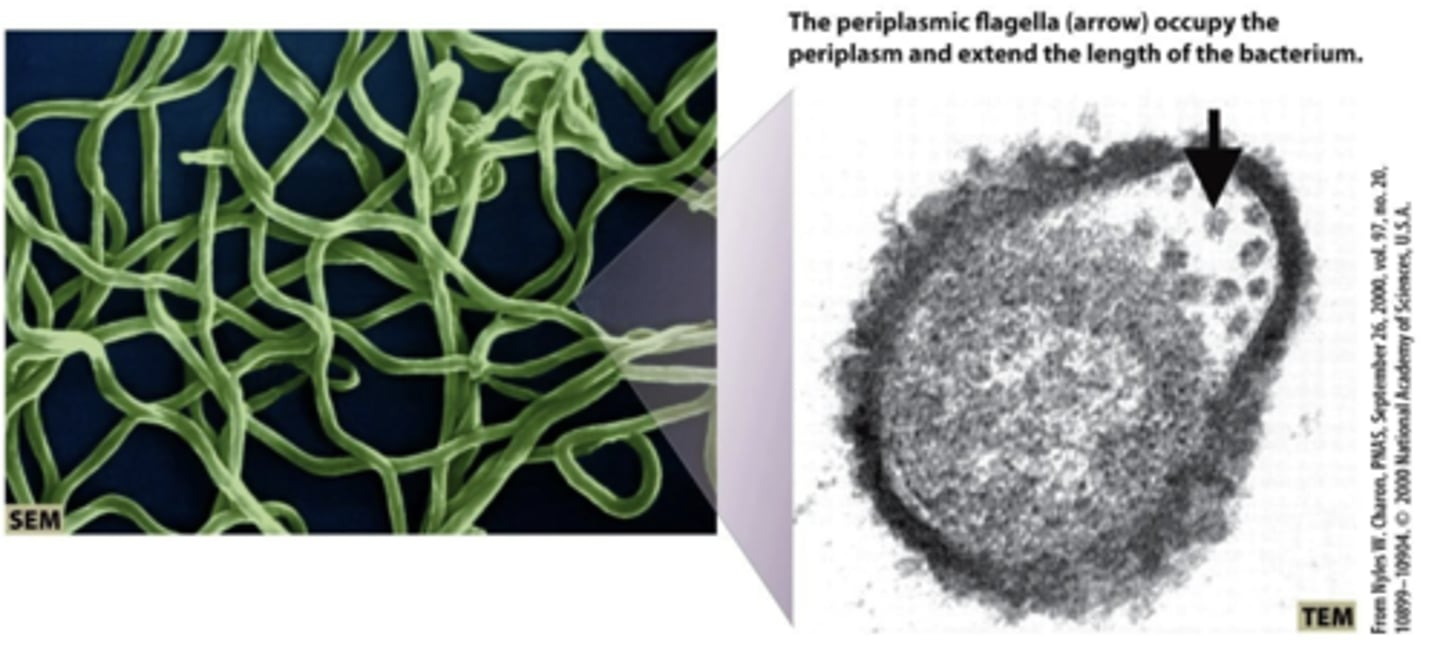
what bacteria struction mediates the adherence of bacteria to stick to surfaces?
pilli; pilin protein possesses other proteins on their tips for sticking
what is a sex pilus used for?
conjugation; sending a DNA plasmid from one cell to another
what are fimbriae?
another name for pili that are used for adherence
what type of pili are assembled and stay as they were assembled?
type I
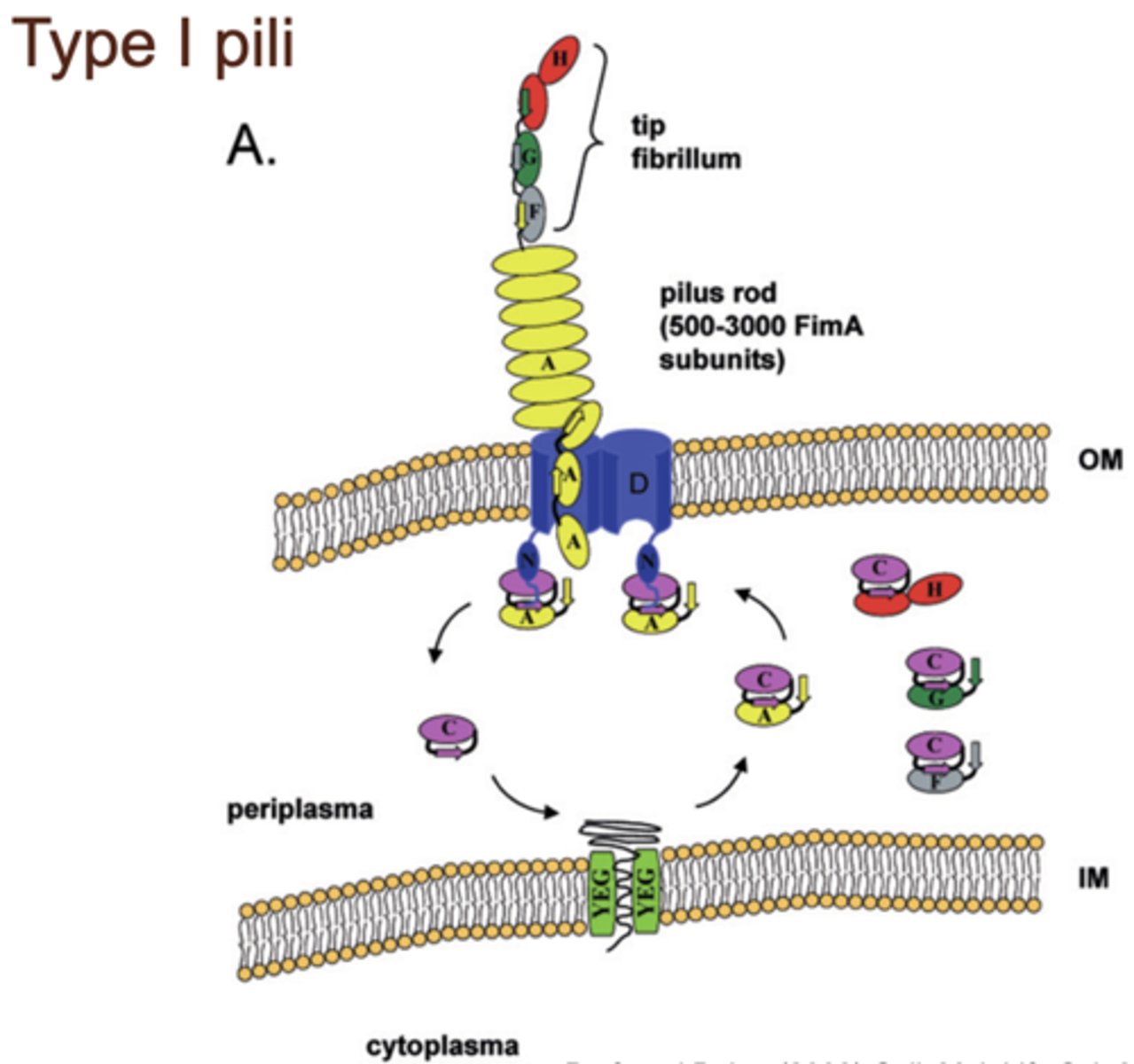
what type of pili needs chaperone subunit complexes and takes proteins to USHER protein for its assemblage?
type I
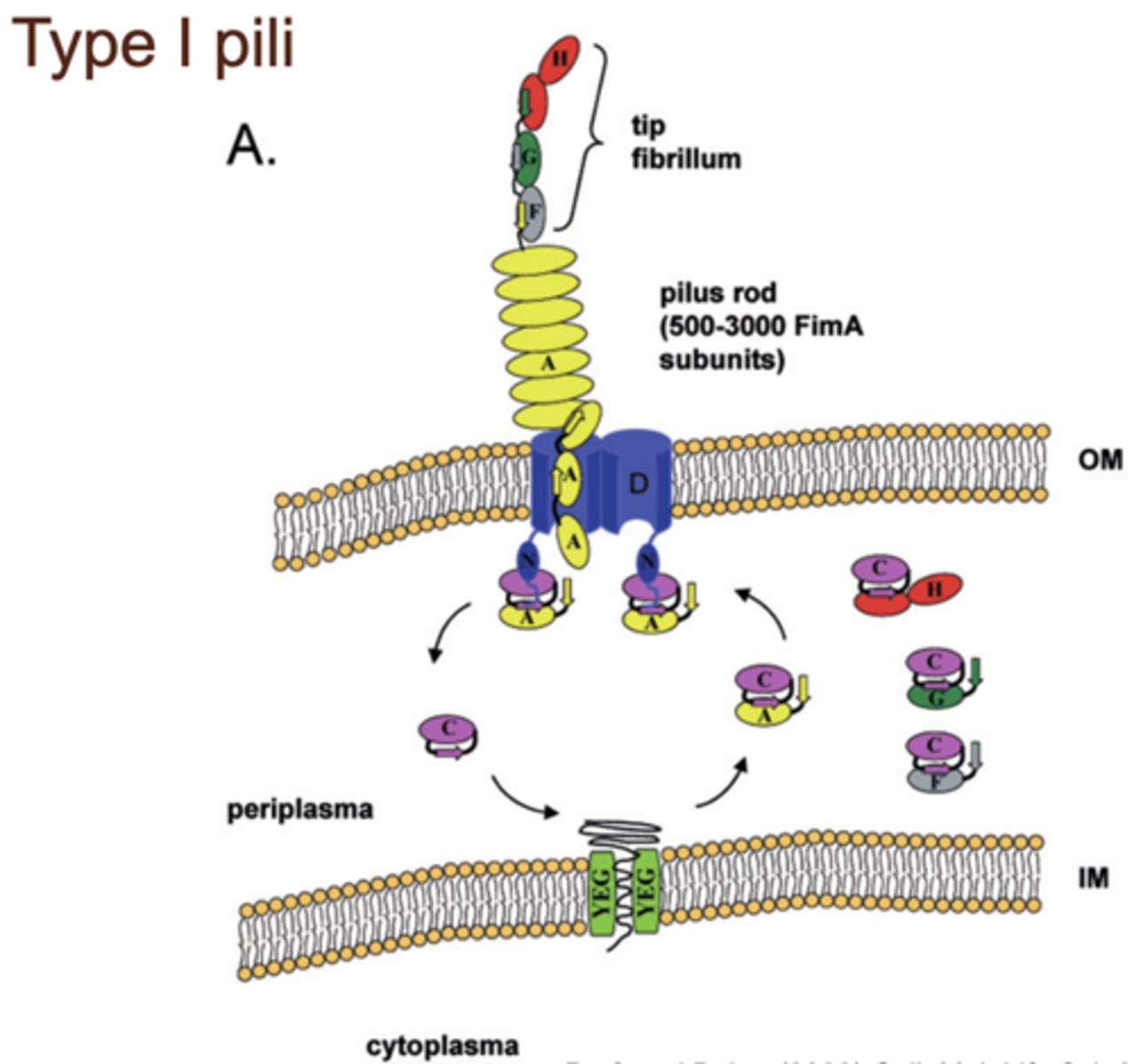
what type of pili has ATPases that control whether the pili is outside or inside the cell?
type iv
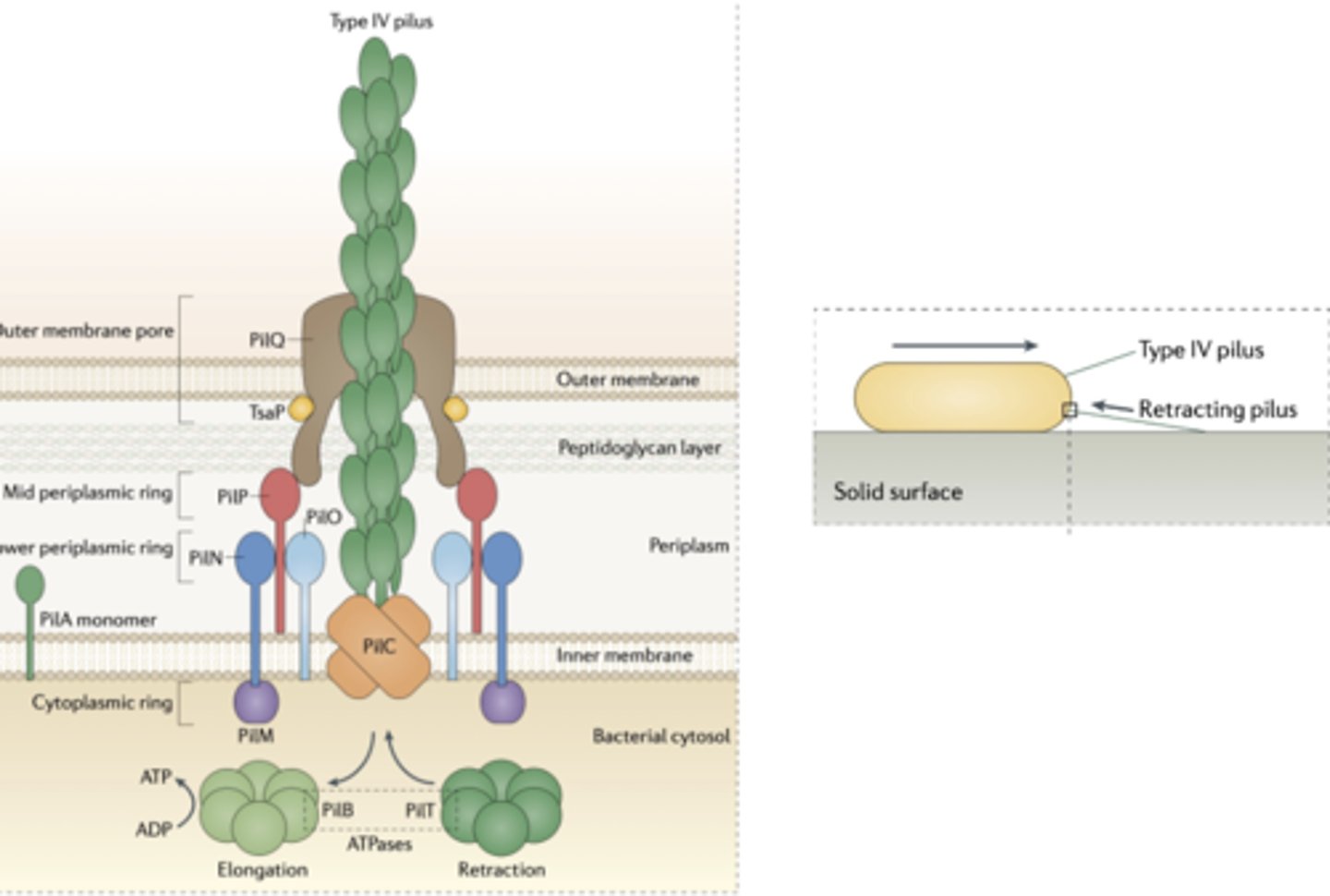
what type of pili allows the bacteria to move around on surfaces?
type iv
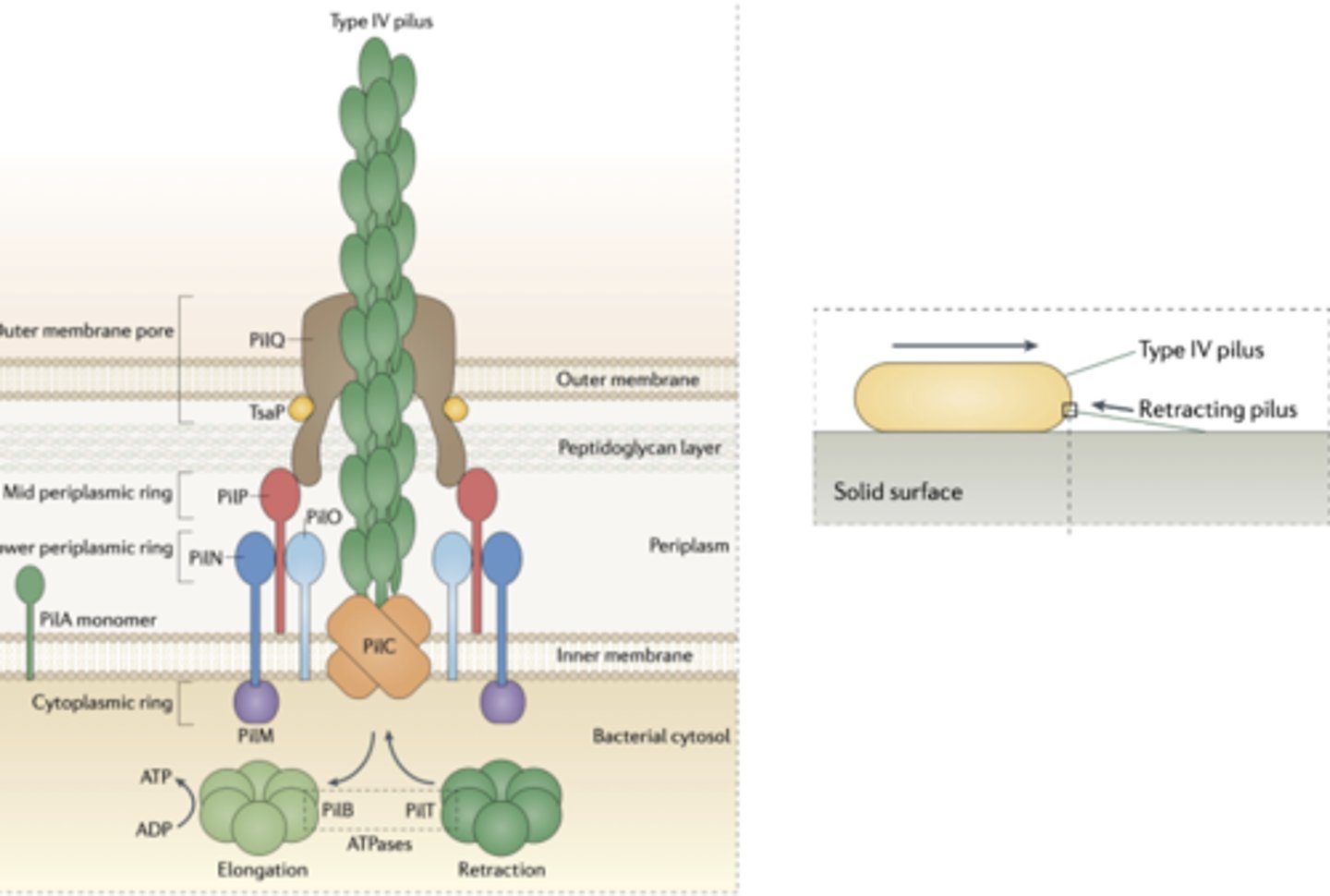
what type of pili allows for twitching motility?
type iv
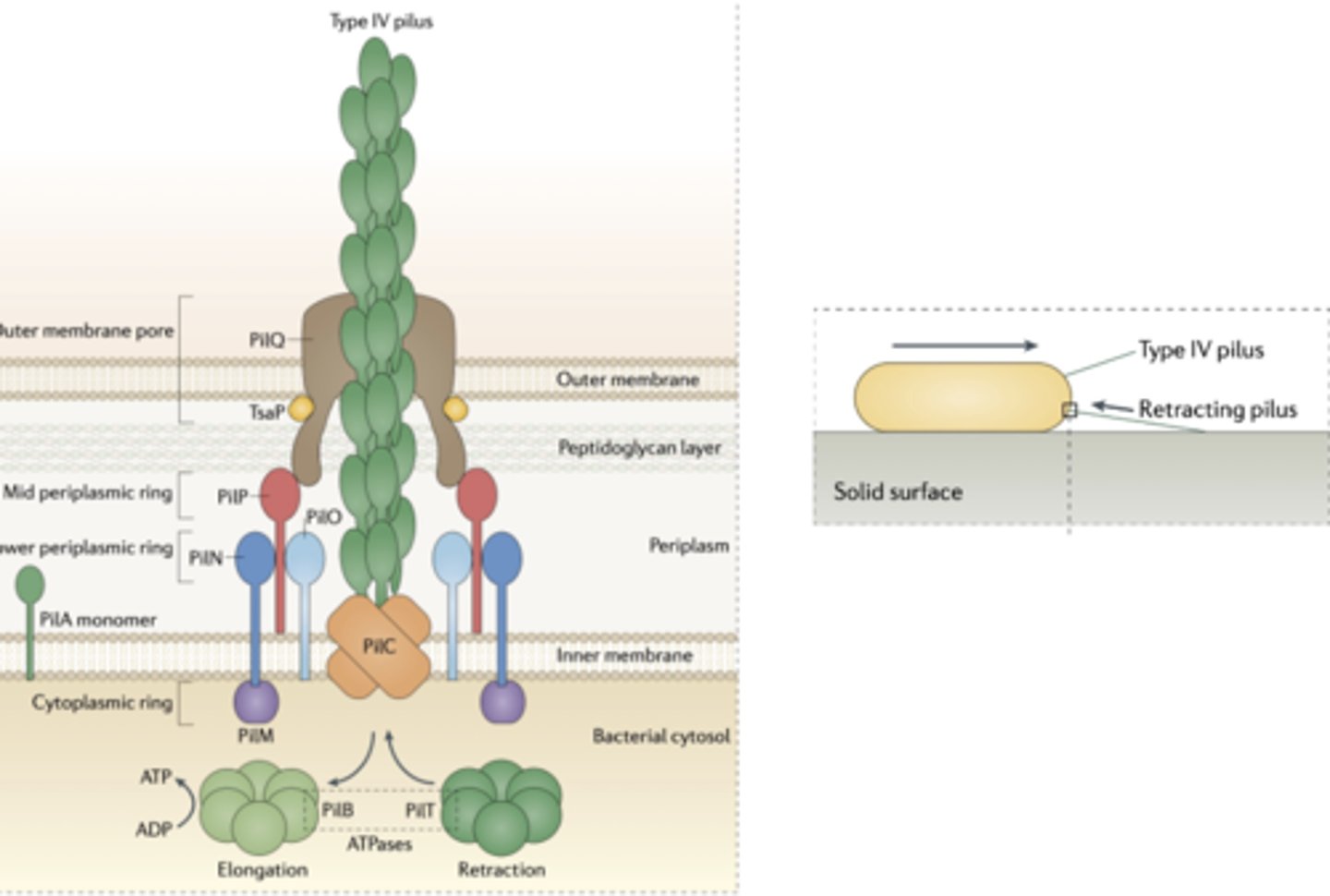
what do Listeria, Shigella, and Rickettsia have in common?
all use actin-based motility in cells to move
tetanus is an example of a disease caused by (a single/multiple) organisms
a single (clostridium tetani)
explain how actin-based motility works in Listeria cells
enter the host cell then use the protein ActA to trigger actin polymerization at one end of their tail; this forms a comet tail that propels them through the cytoplasm and into neighboring cells, spreading infection without leaving the host cell
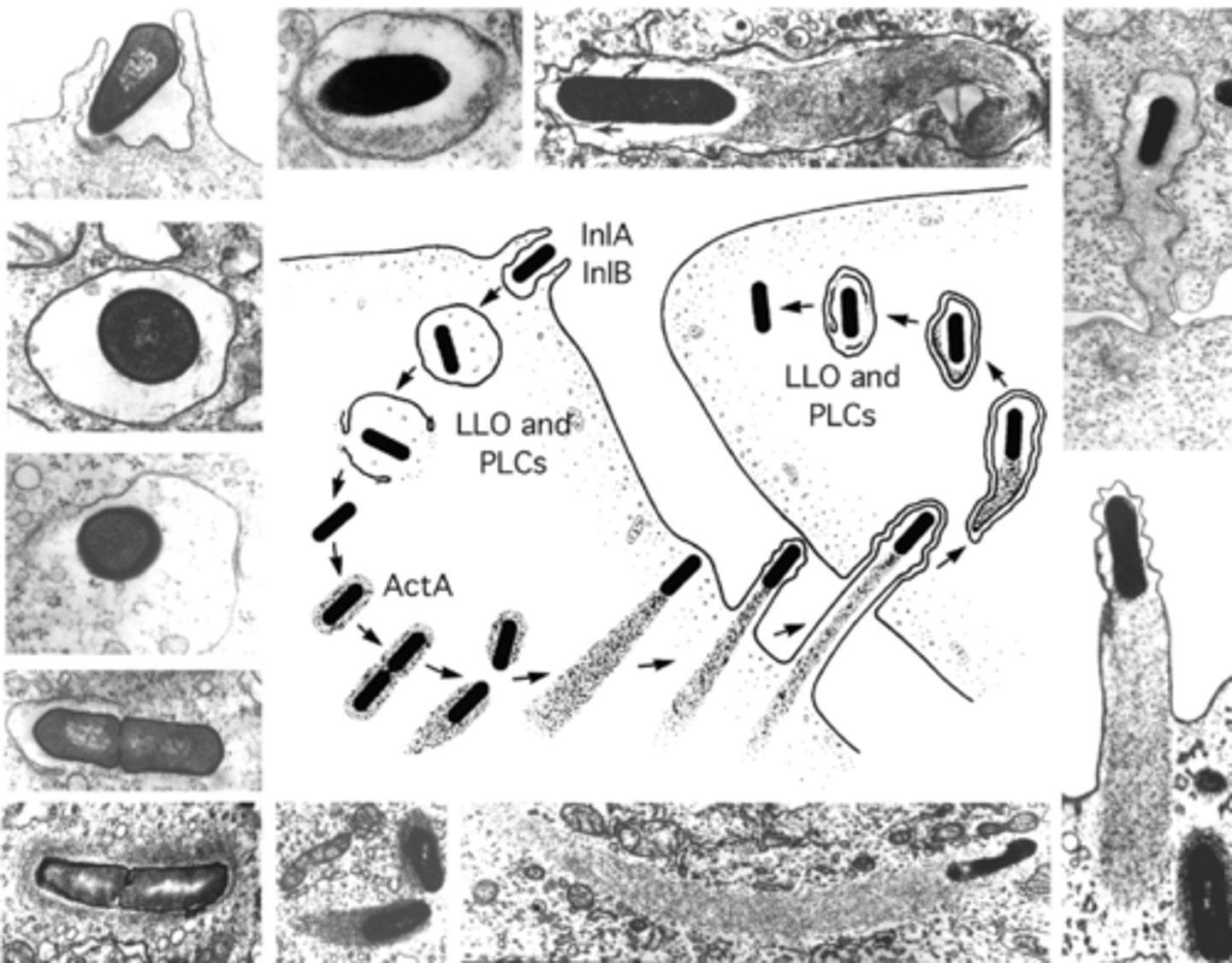
what type of pili can be retracted?
type iv

gastroenteritis and pneumonia are examples of a disease caused by (a single/multiple) organisms
multiple
sepsis and meningitis are examples of a disease caused by (a single/multiple) organisms
multiple
what are the 5 stages of disease?
1. incubation: development of infection
2. prodromal: early sign or symptom of disease
3. illness: actual disease occurs
4. decline: immune system mounts successful defense
5. convalescence: symptoms resolved
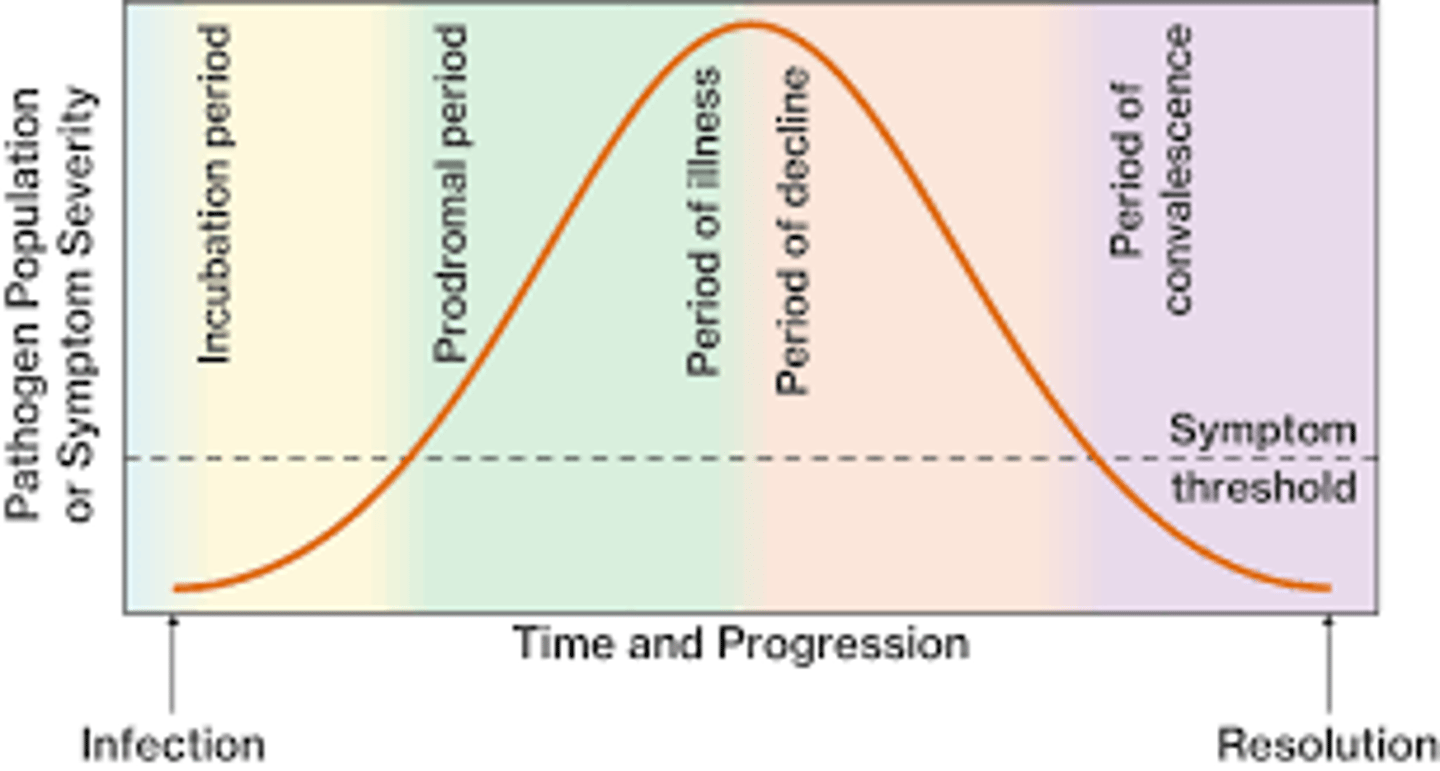
an accurate _____________ diagnosis is necessary to understand the etiology of disease
differential
what are the benefits of the secretion systems of bacteria?
allow the bacteria to shape their environment by exporting enzymes/toxins
which type of secretion system is the most important for virulence factors?
type iii
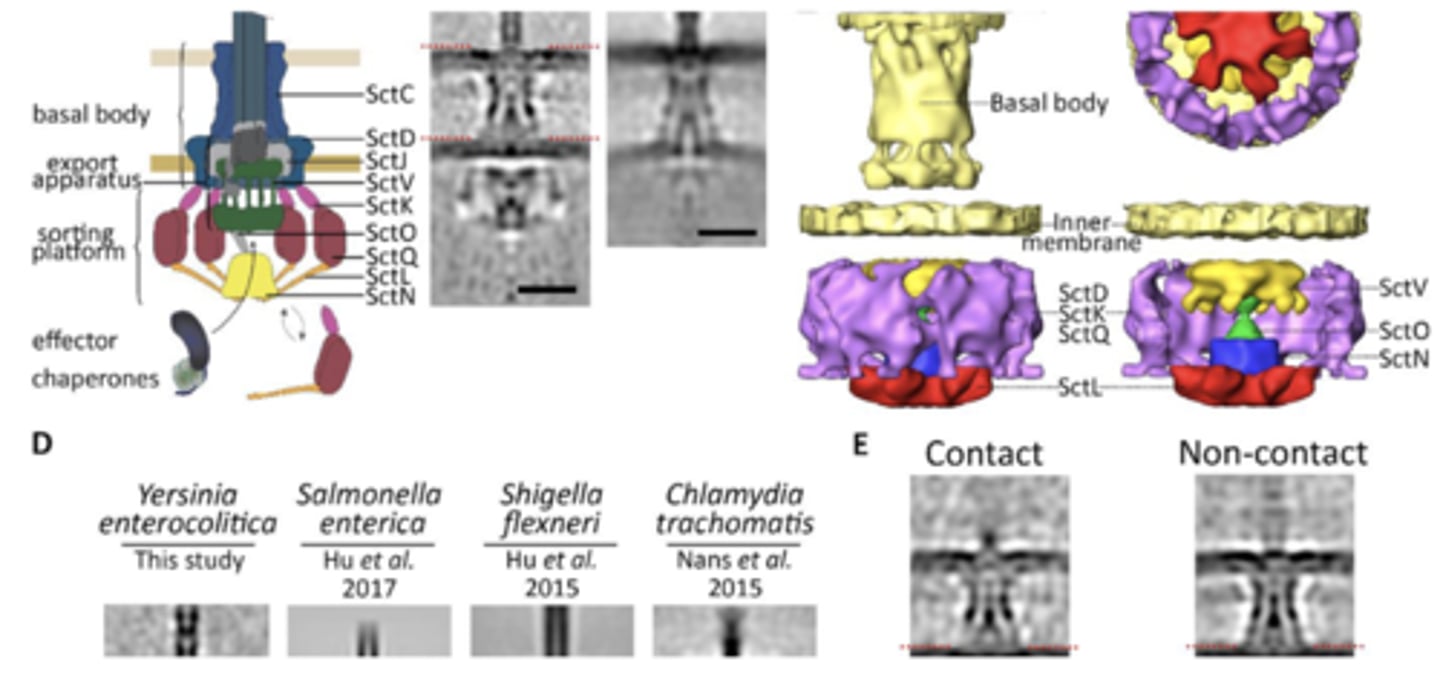
which type of secretion system looks like a molecular syringe?
type iii
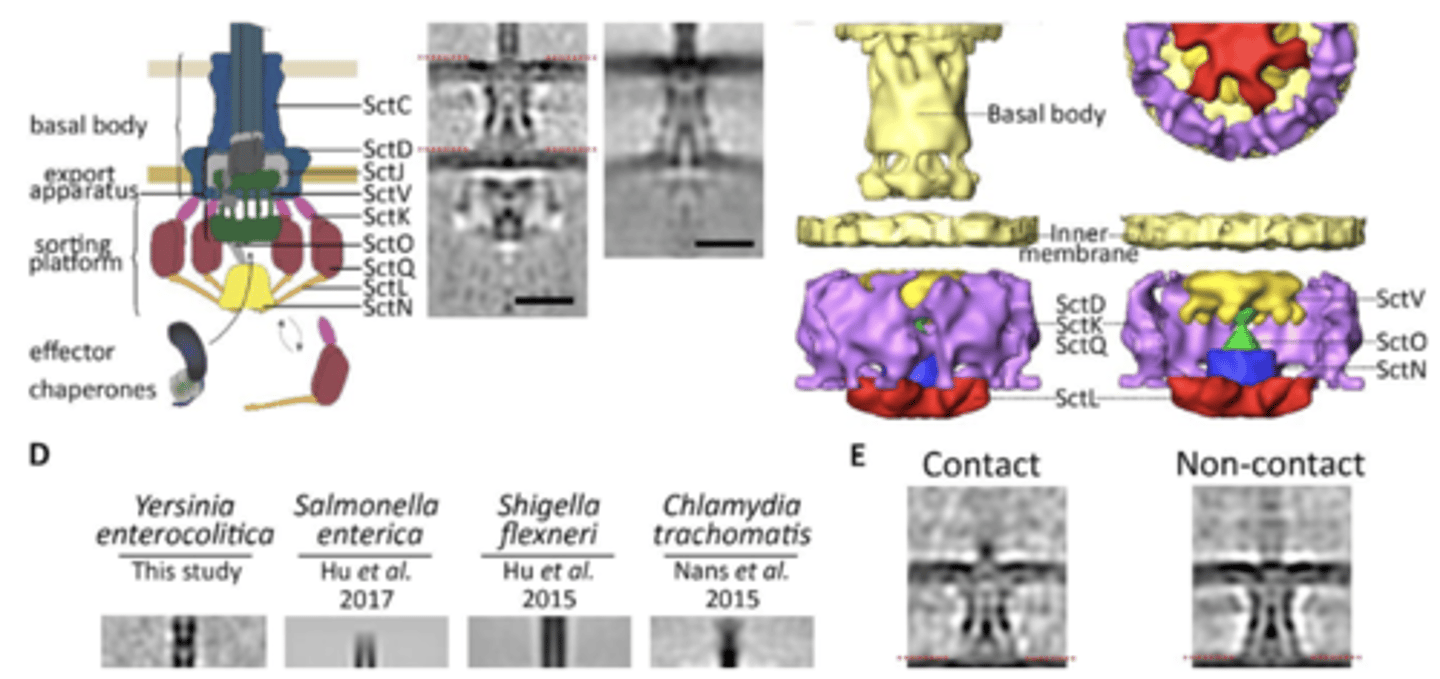
which type of secretion system allows bacteria to inject cytoplasmic proteins into the host cell's cytoplasm?
type iii
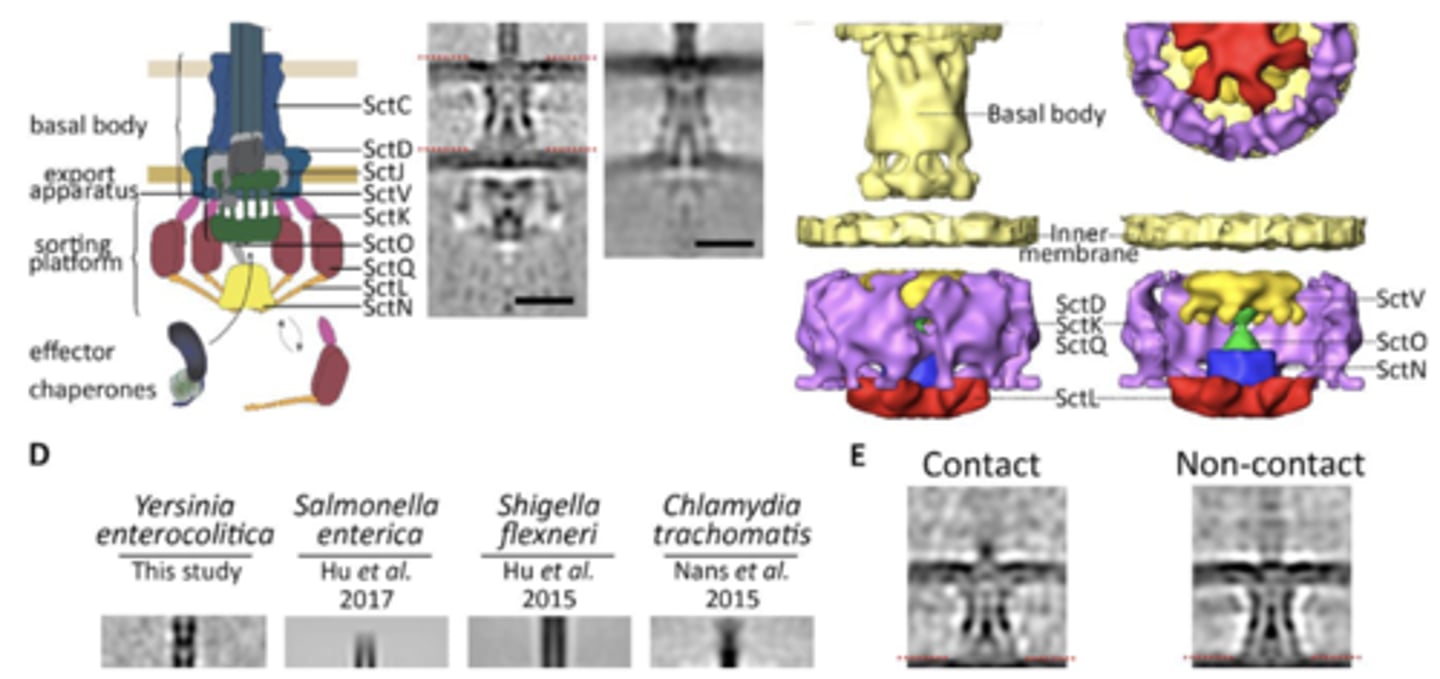
which type of secretion system is related to the flagella (central portion of flagella that forms the flagella)?
type iii
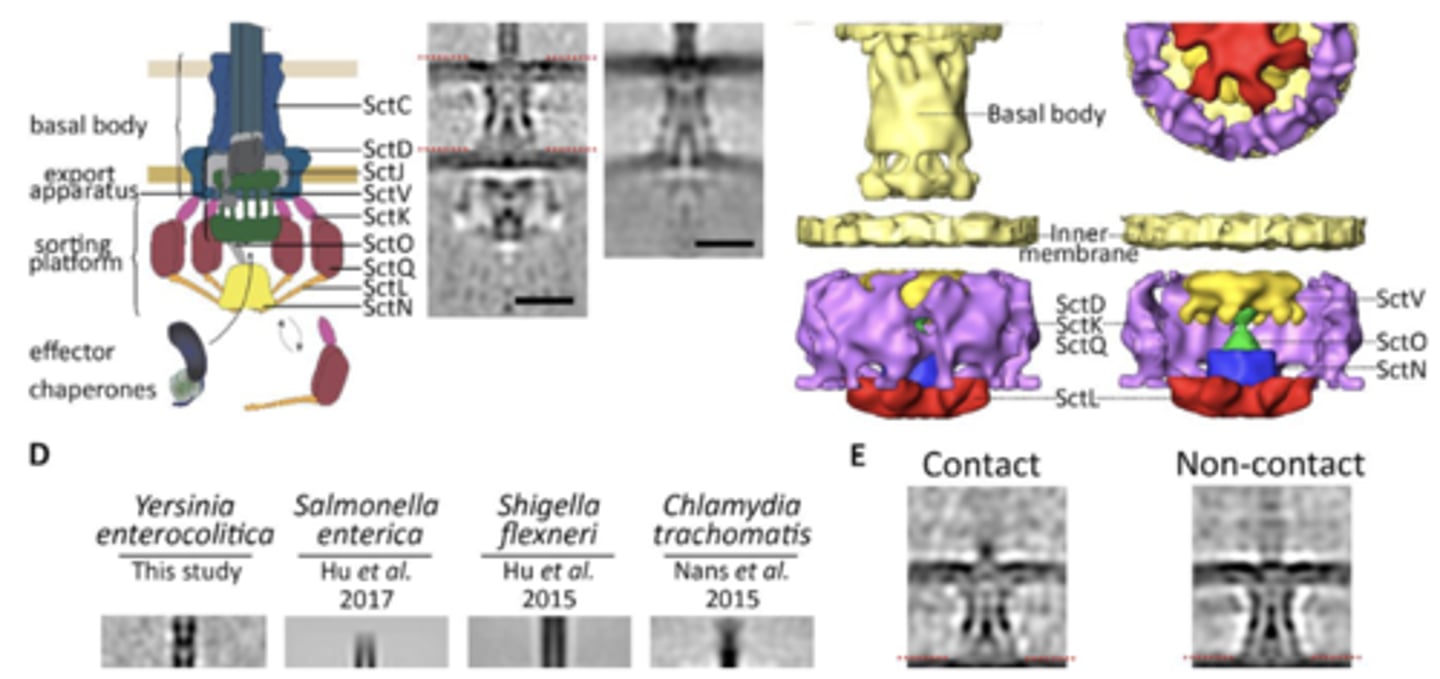
which type of secretion system provides defense/immunity against predators?
type iii
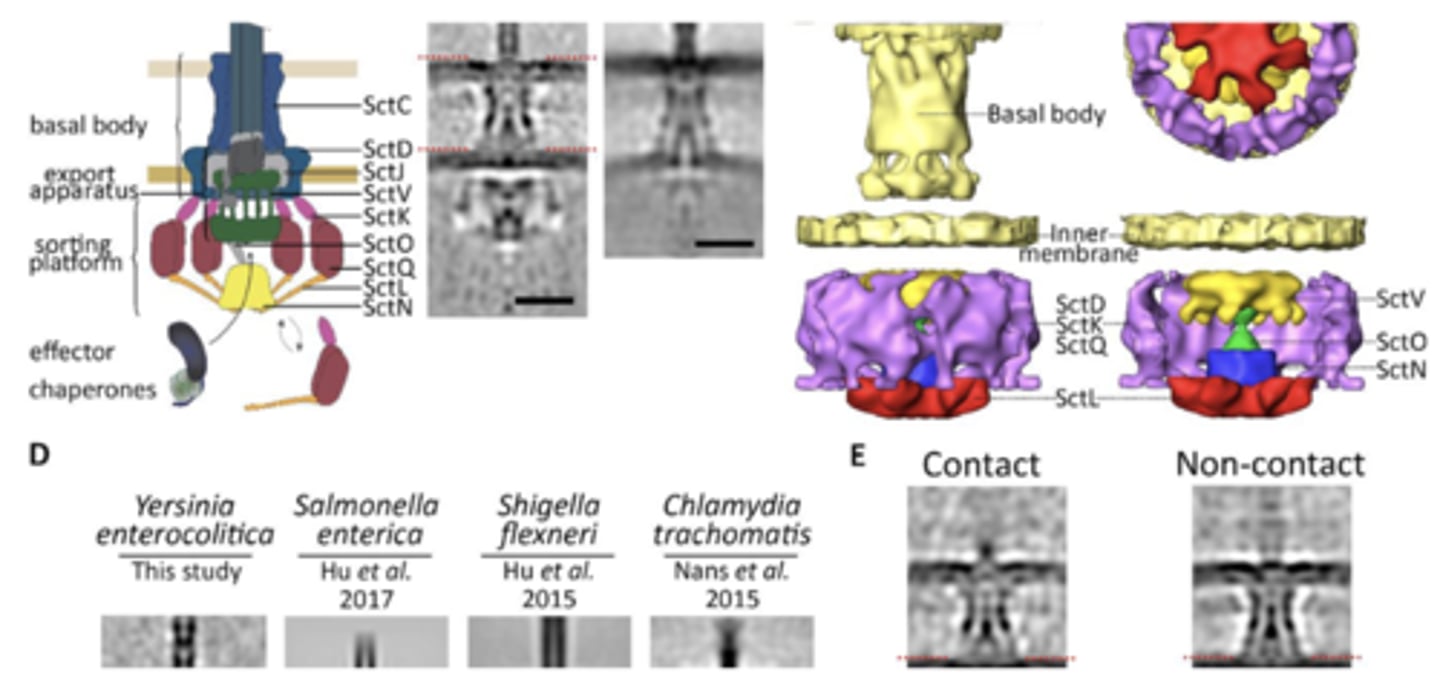
which type of secretion system is a contact-trigger secretion process (secretes into host cell, not environment)?
type iii
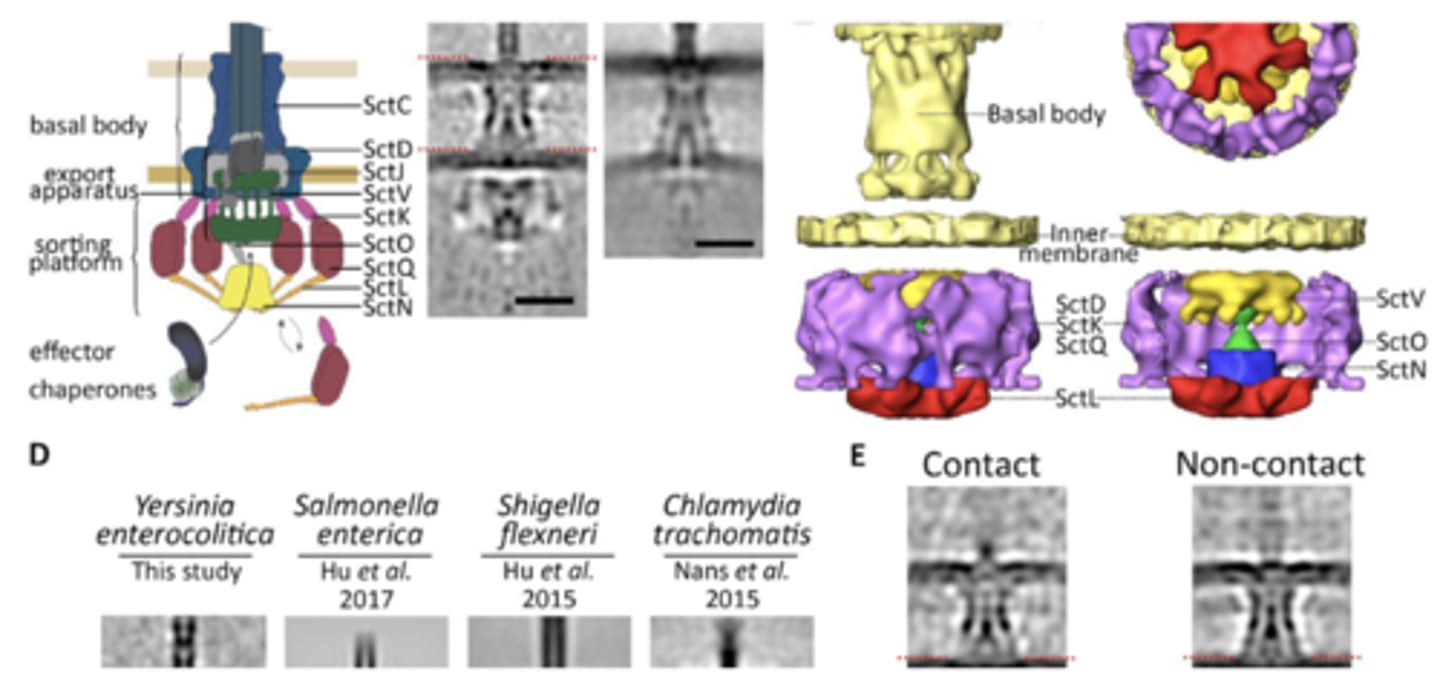
which type of secretion system is used by Yersinia?
type iii
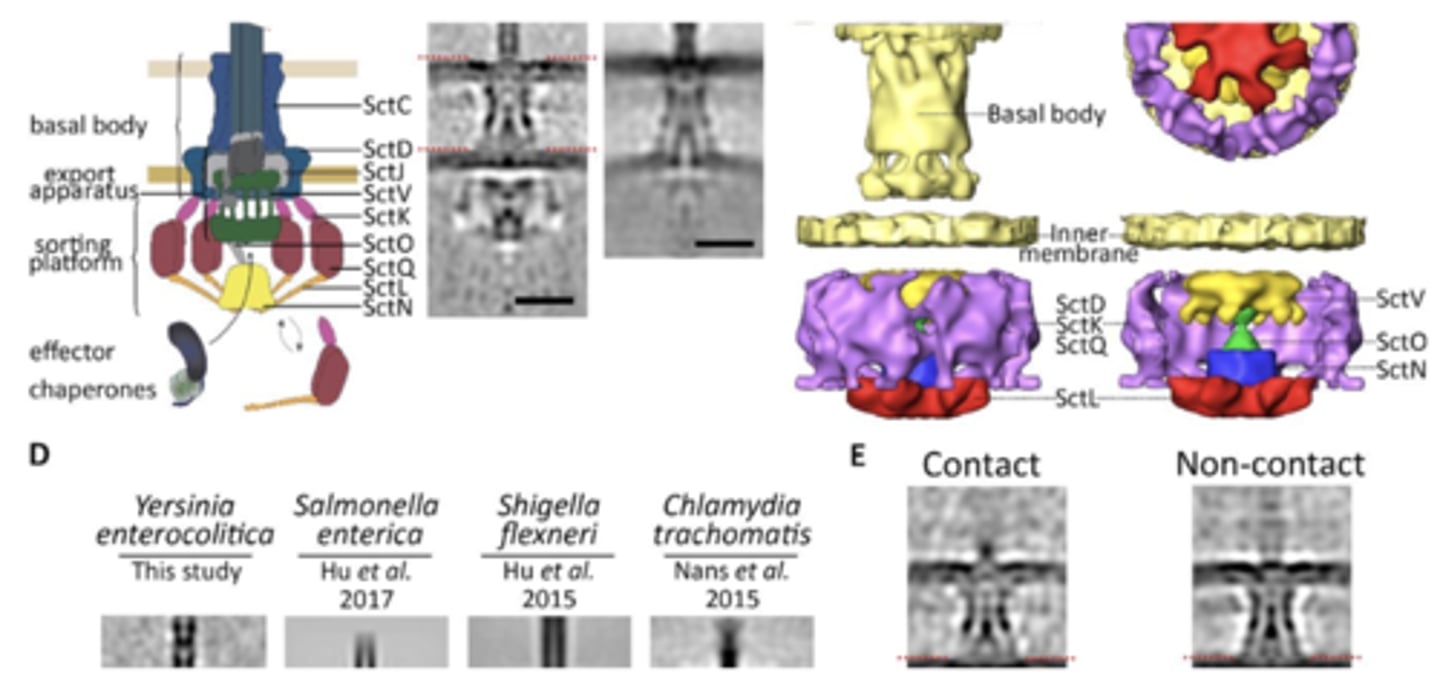
which type of secretion system is found in Porphyromonas, Tannerella, and Prevotella species (members of the FCB superphylum)?
type ix
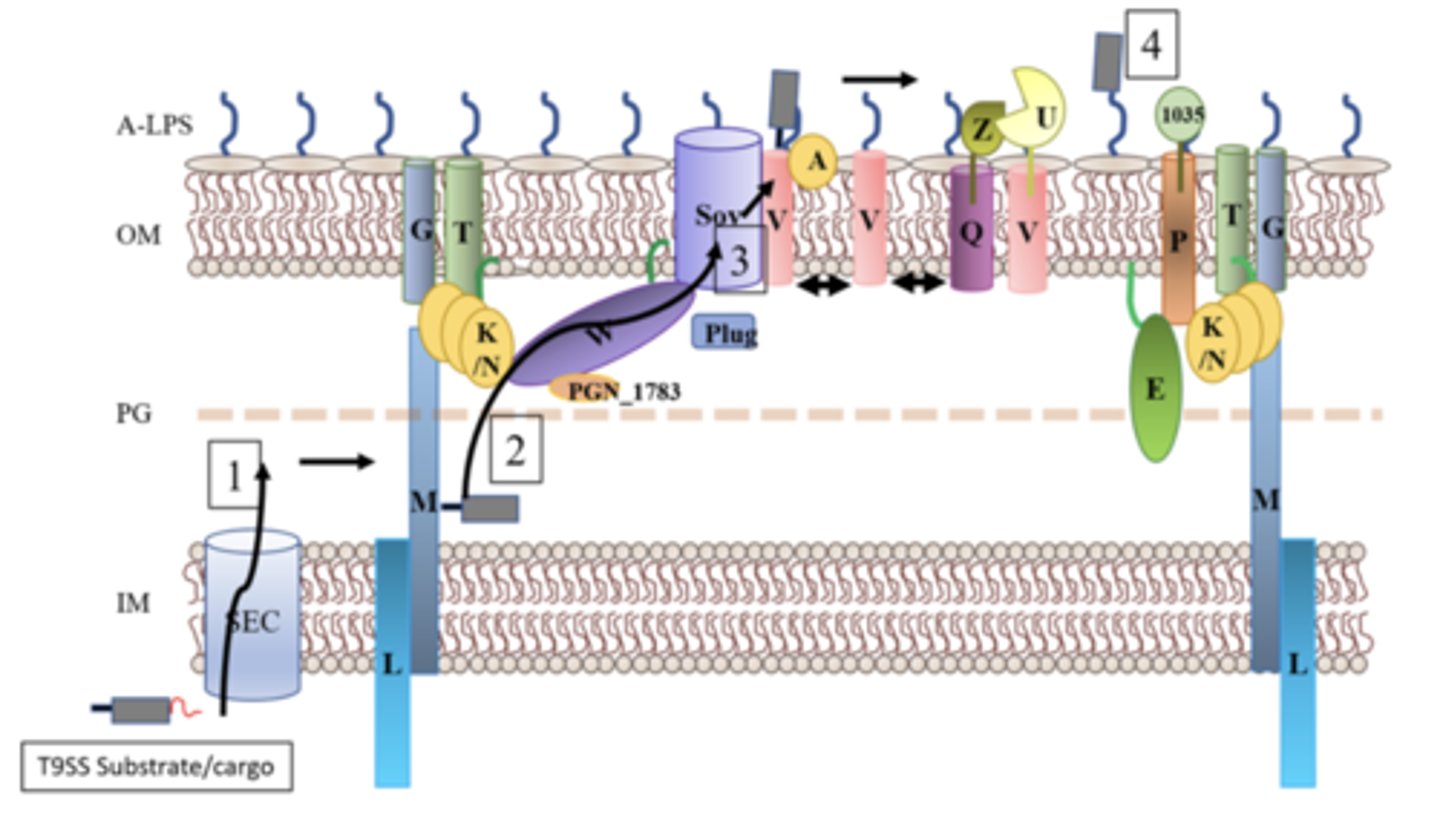
which type of secretion system is used by important contributors of periodontitis?
type ix
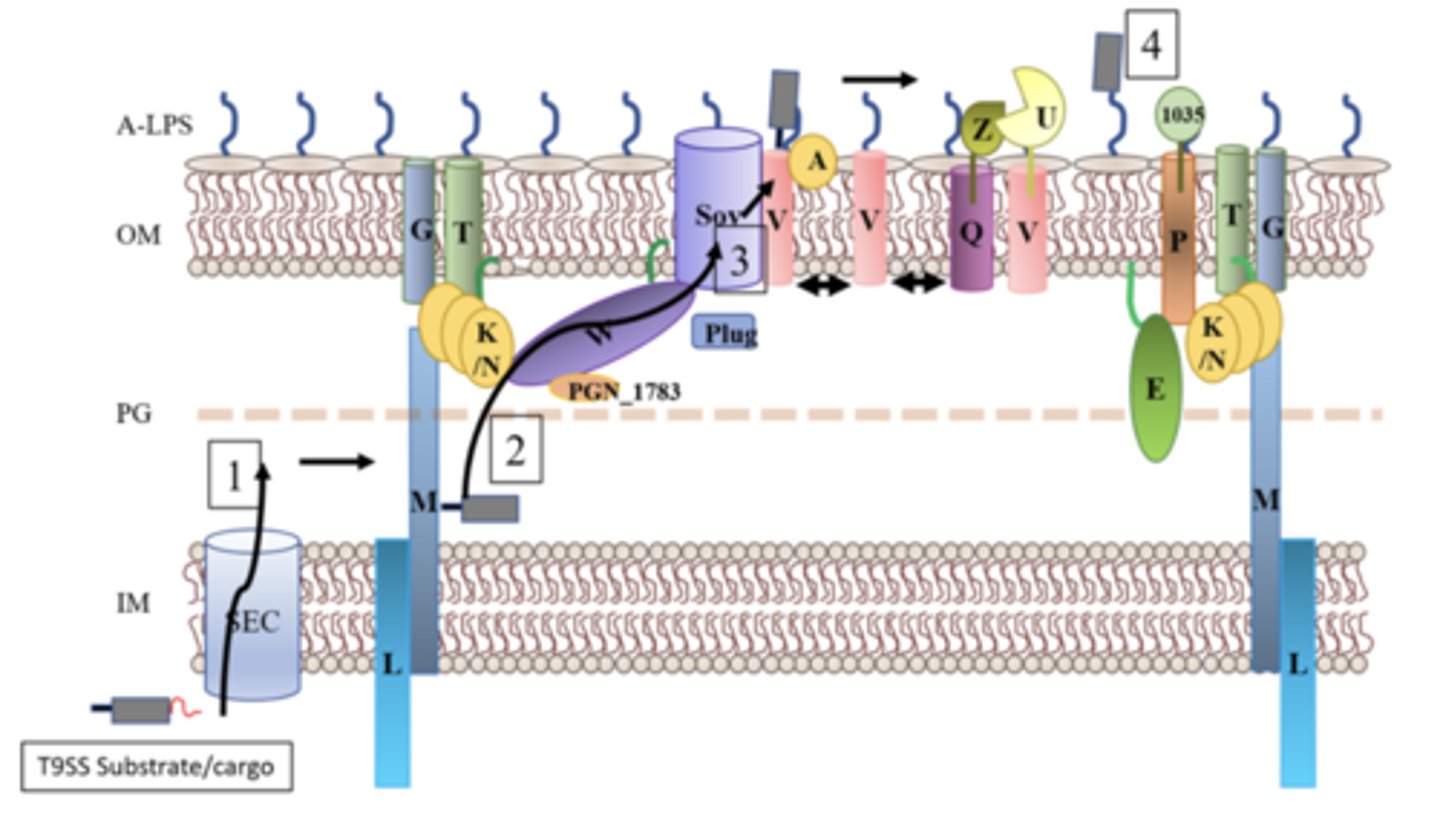
which type of secretion system exports gingipains and other proteases?
type ix
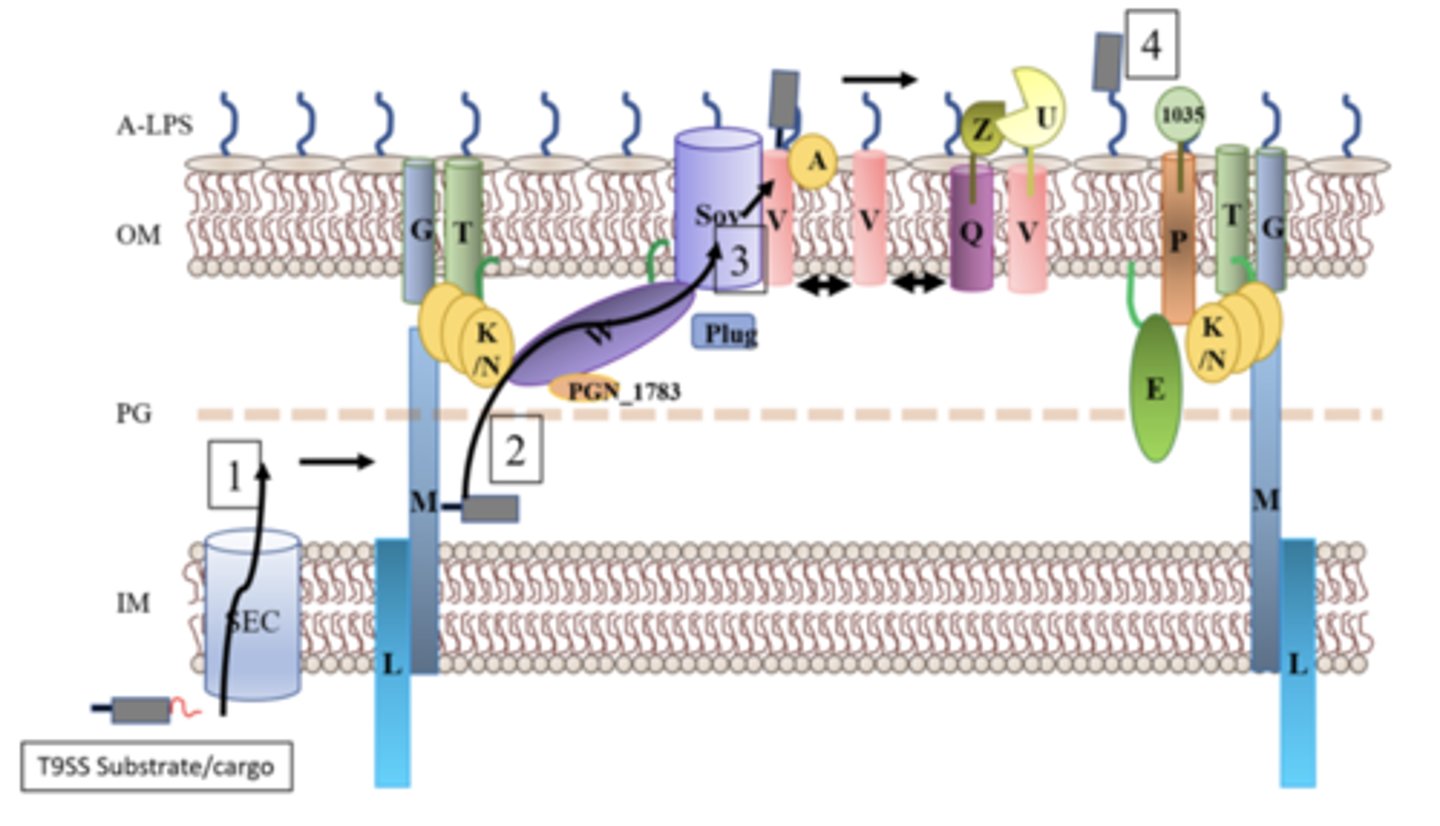
which type of secretion system exports pili, hemin binding, hemagglutinins, internalin, etc.?
type ix
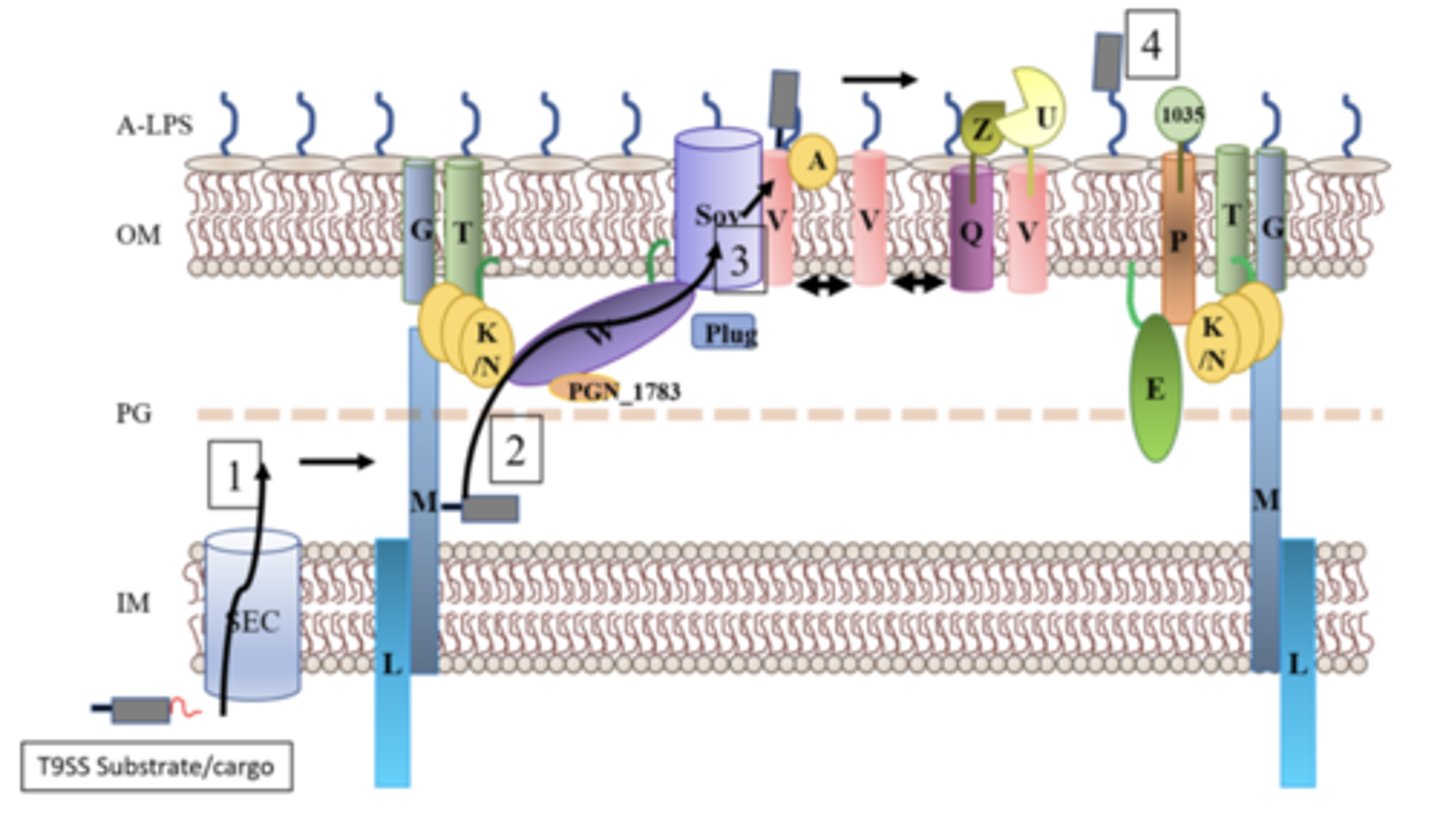
which type of secretion system exports proteins that become covalently attached to LPS?
type ix
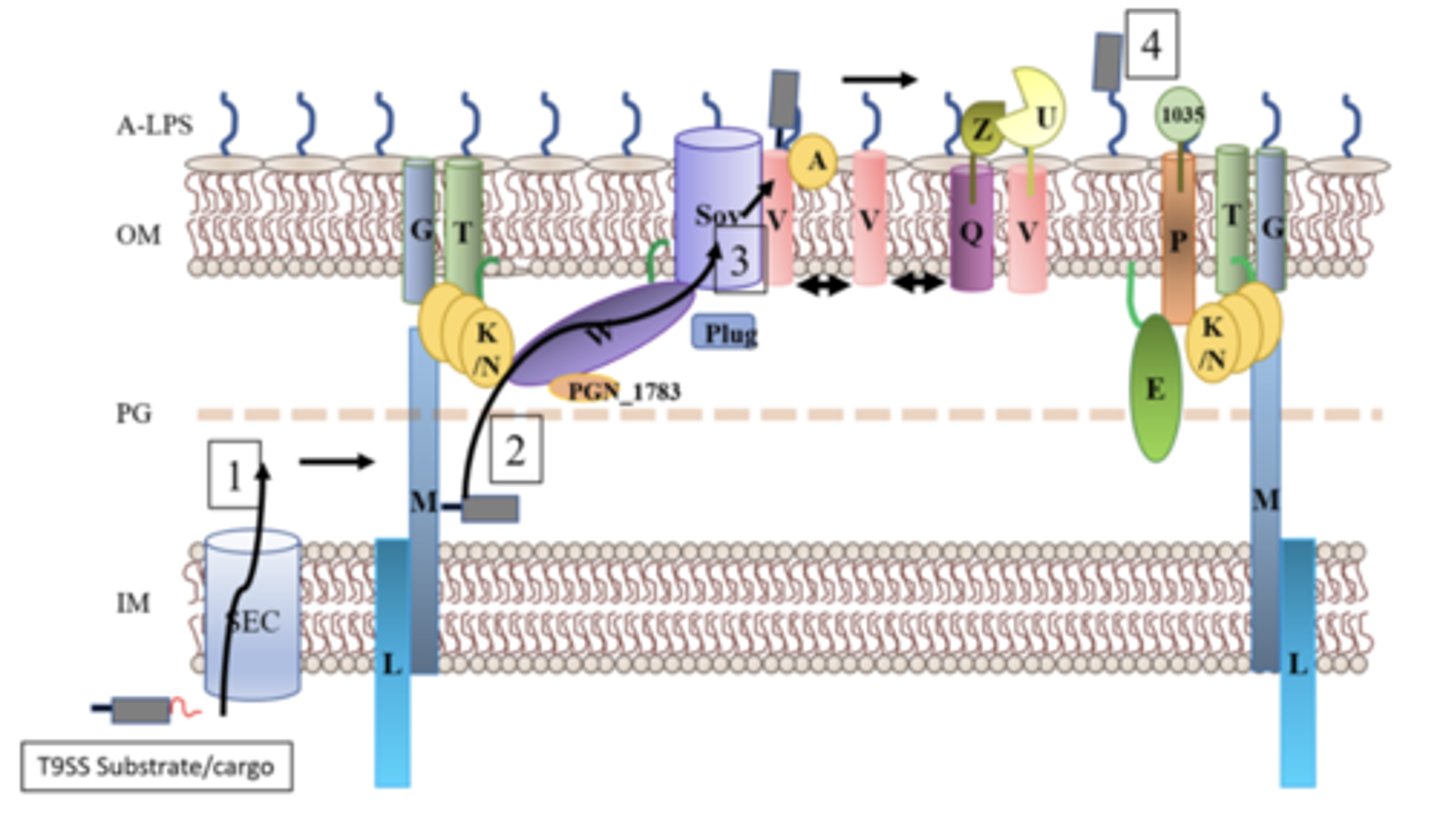
which type of secretion system allows the bacteria to pinch off automembrane vesicles with virulence promoting proteins?
type ix
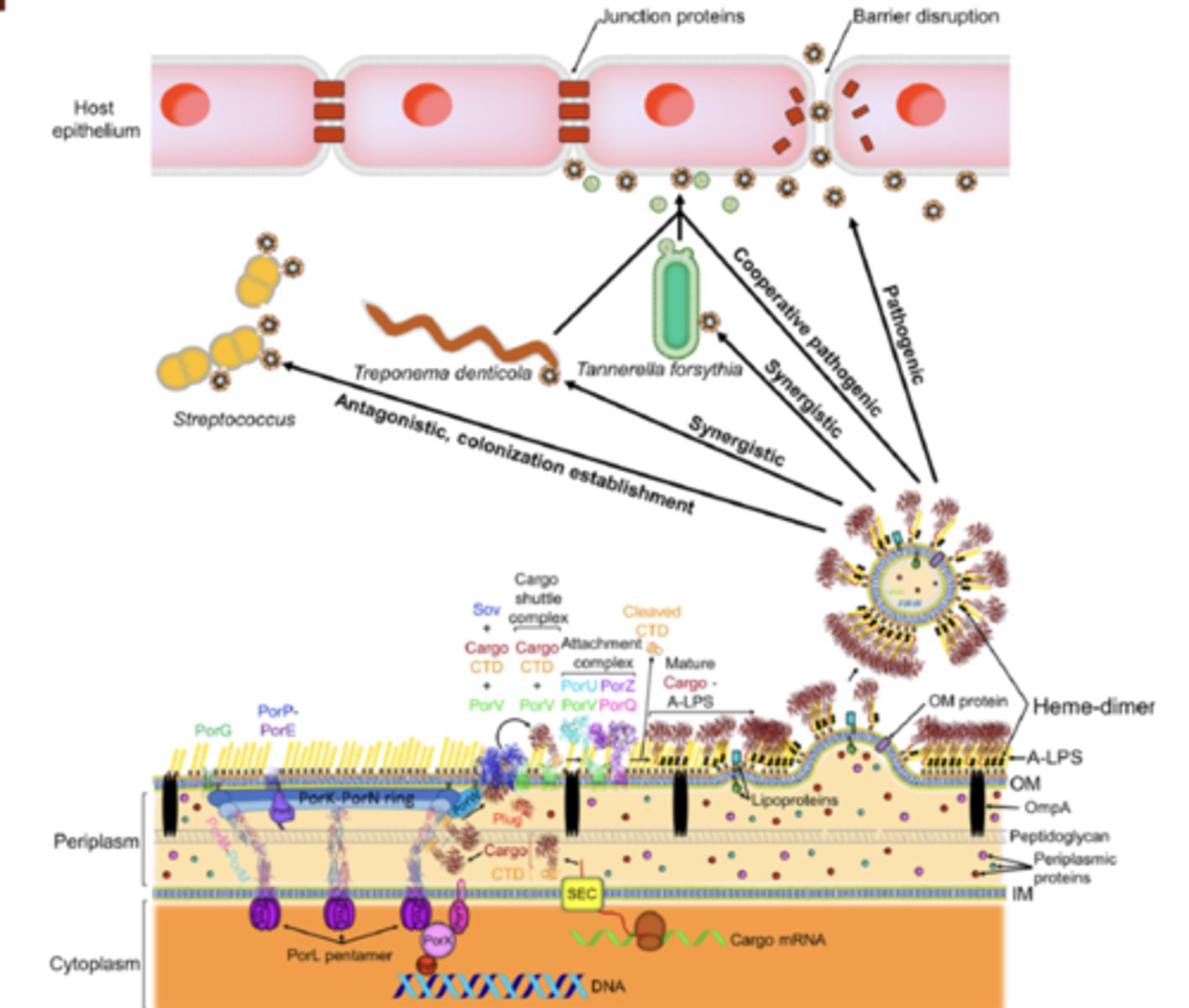
what would be the problem with a P. gingivalis with a T9SS mutation?
a defective type ix secretion system (T9SS) won't allow for the secretion of virulence factors like gingipains; results in reduced virulence, impaired protein secretion, and altered surface structure.
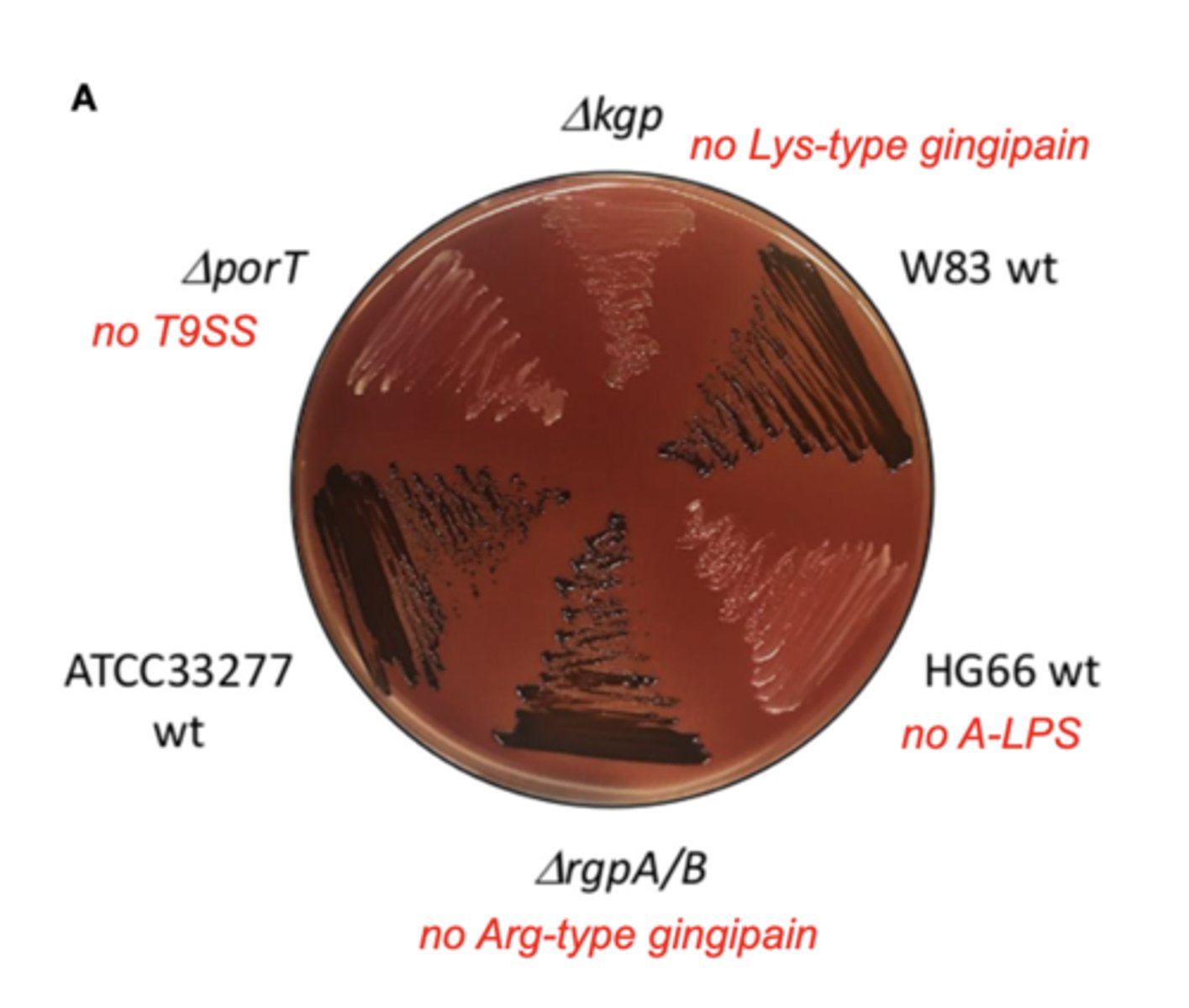
which type of secretion system is important for gliding motility?
type ix
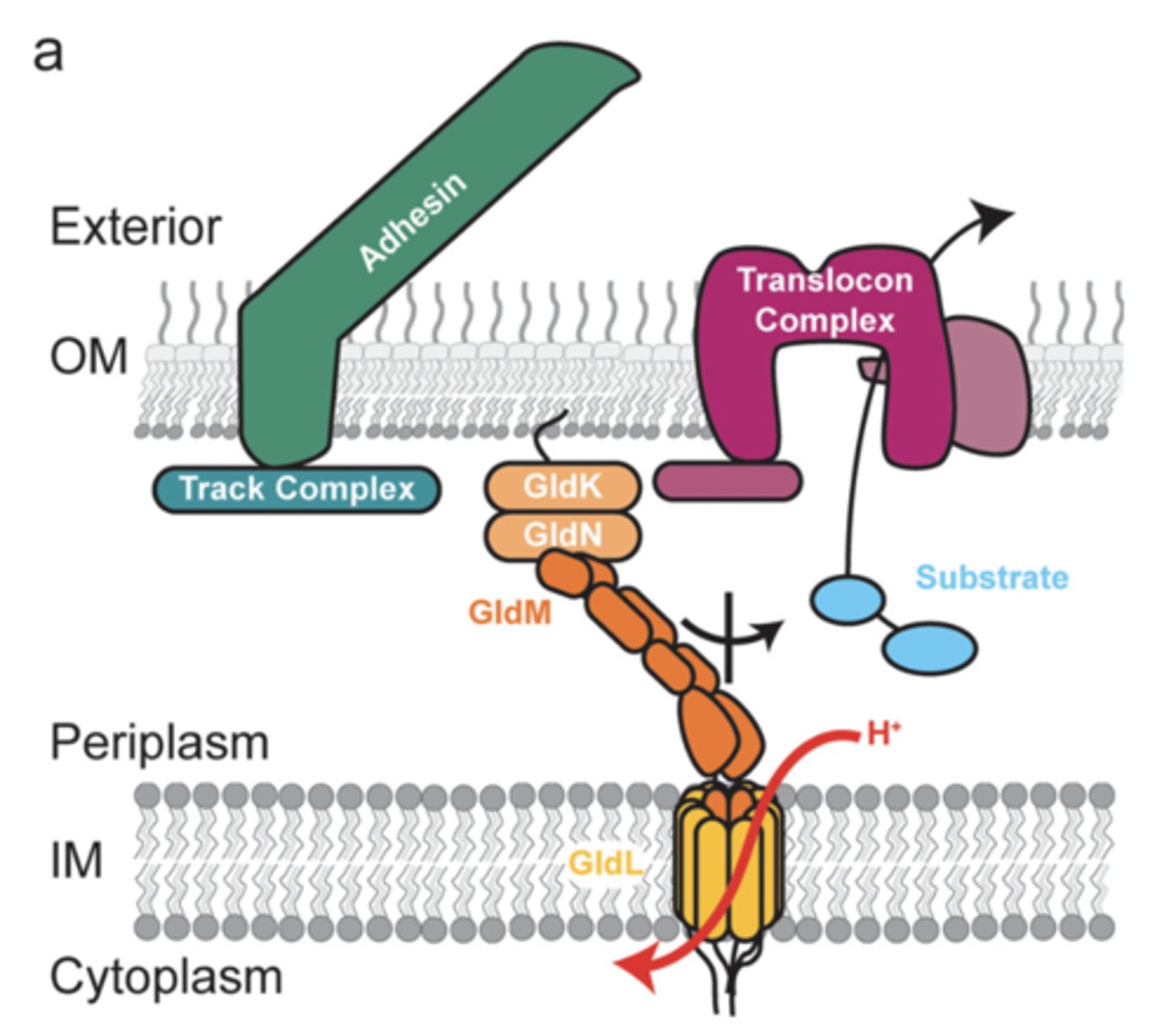
how does gliding motility in a bacteria work?
gliding bacteria move smoothly along surfaces without flagella by using surface proteins or motors powered by proton motive force; a "track" of surface adhesins is used that rotate around the cell for the movement

endotoxins vs exotoxins: produced only by gram negative bacteria
endotoxins
endotoxins vs exotoxins: LPS
endotoxins
endotoxins vs exotoxins: causes fever
endotoxins
endotoxins vs exotoxins: causes shock
endotoxins
endotoxins vs exotoxins: released at cell death
endotoxins
endotoxins vs exotoxins: produced by gram negative and gram positive bacteria
exotoxins
endotoxins vs exotoxins: proteins/enzymes
exotoxins
endotoxins vs exotoxins: potent effects
exotoxins
endotoxins vs exotoxins: causes specialized tissue damage
exotoxins
endotoxins vs exotoxins: secreted
exotoxins
endotoxins vs exotoxins: AB toxins
exotoxin
what are the 2 components of an AB toxin?
1. a (active) subunit
2. b (binding) subunit
which component of an AB toxin will disrupts host cell function like stop protein synthesis or alter signaling?
a (active) subunit
which component of an AB toxin will bind to the host cell and helps the other subunit enter?
b (binding) subunit
what is the name of the best studied AB toxins and one of the first to be discovered?
diptheria toxin
which bacteria secretes diptheria toxin?
corynebacterium diptheriae
what enzyme will diptheria toxin target to inhibit translation by ADP ribosylation?
EF-2 (elongation factor 2)
describe diptheria toxin uptake in a host cell
1. R domain binds to host receptor
2. T domain is then able to translocate the cell membrane
3. A domain (toxin) is then able to enter the host cell
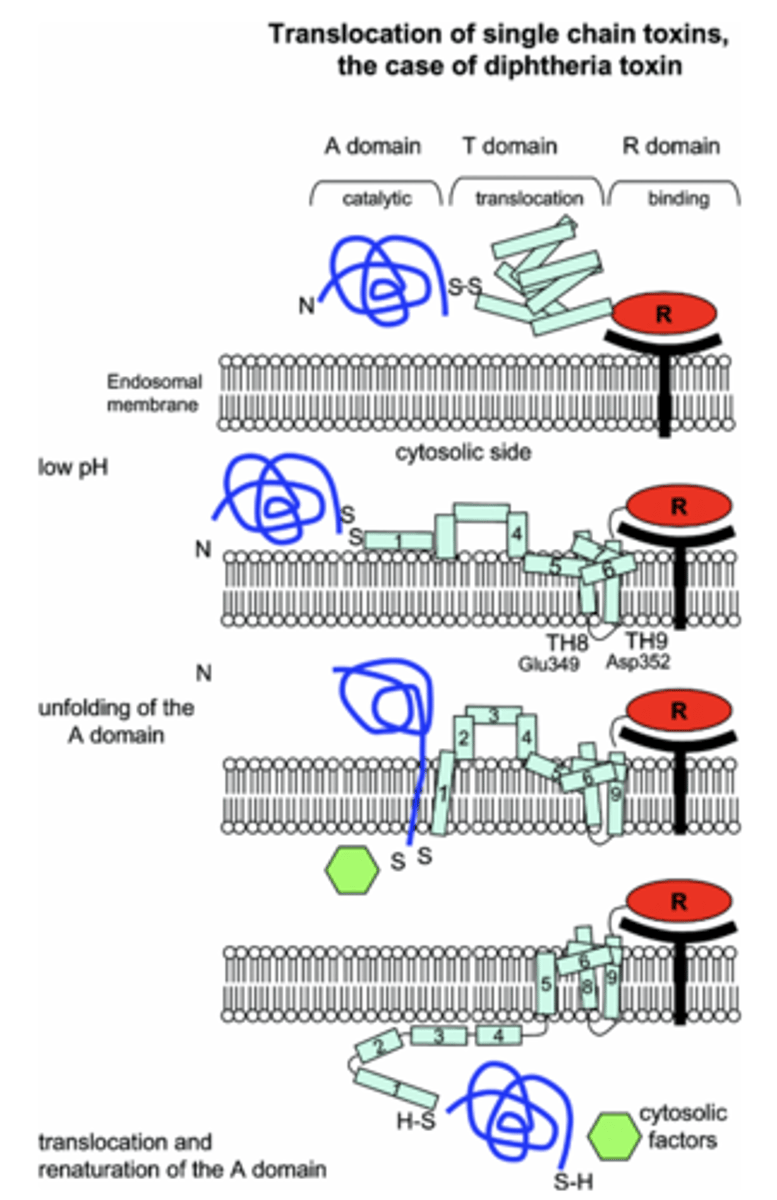
alpha vs beta vs gamma hemolytic exotoxins: partial or incomplete form of hemolysis
alpha (green)

alpha vs beta vs gamma hemolytic exotoxins: complete destruction of red blood cells
beta (transparent)
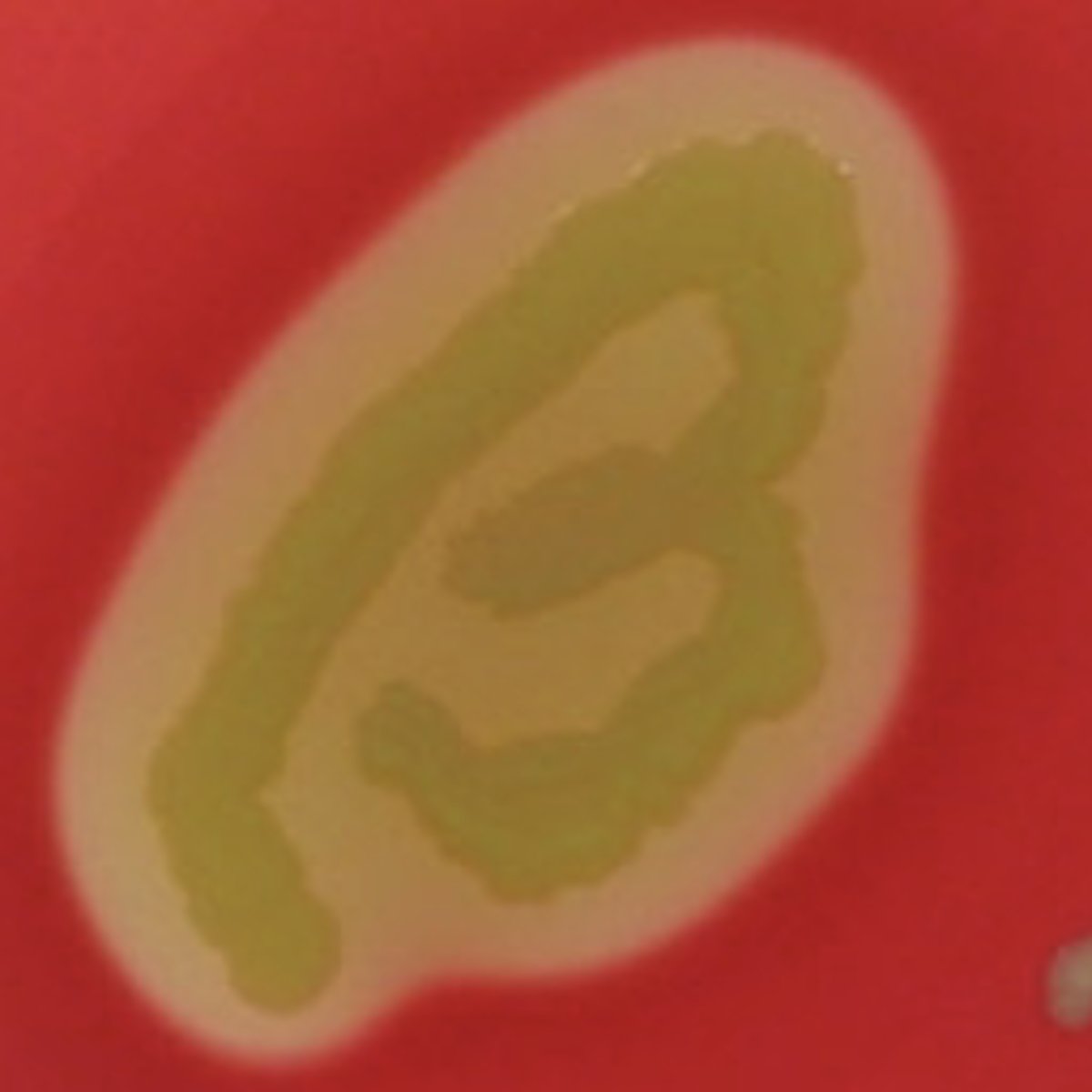
alpha vs beta vs gamma hemolytic exotoxins: not hemolytic
gamma (not much color change)
